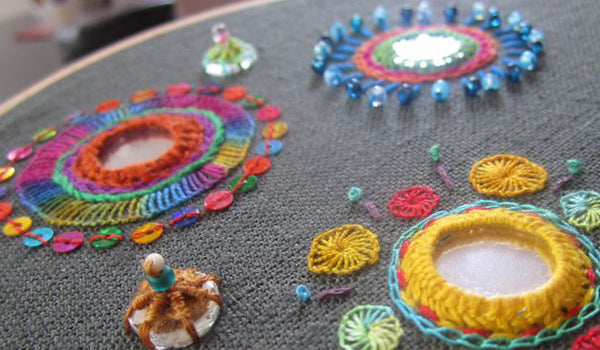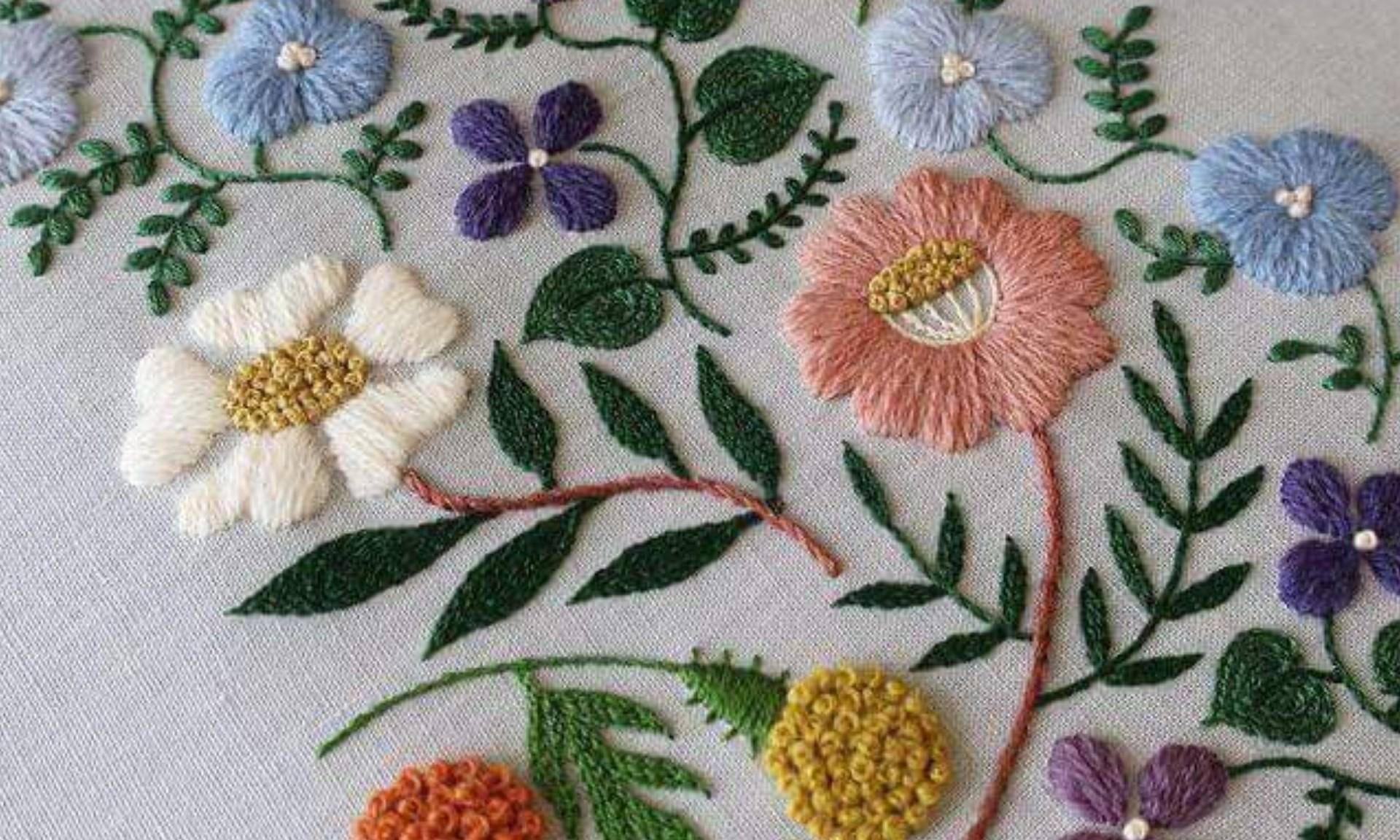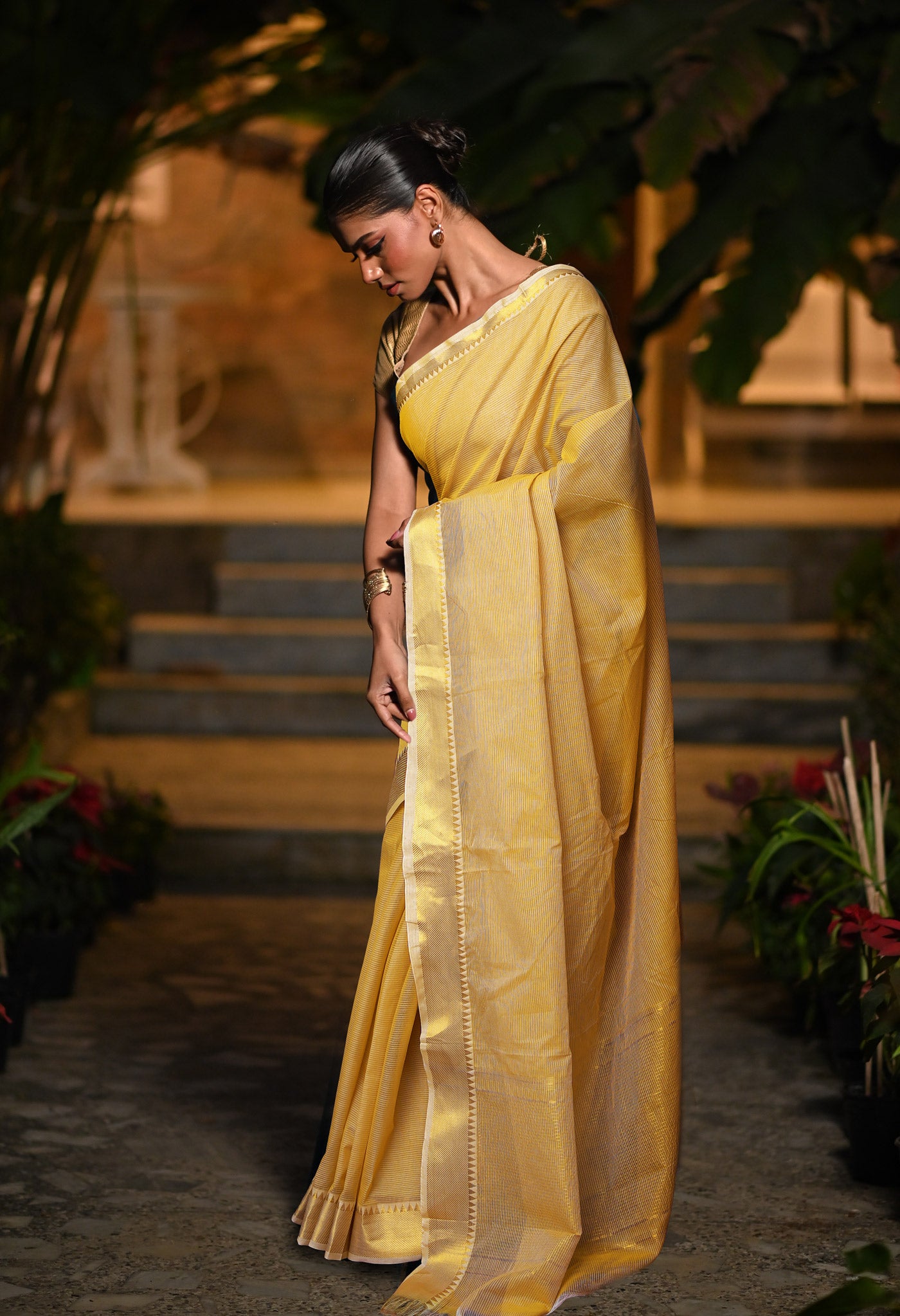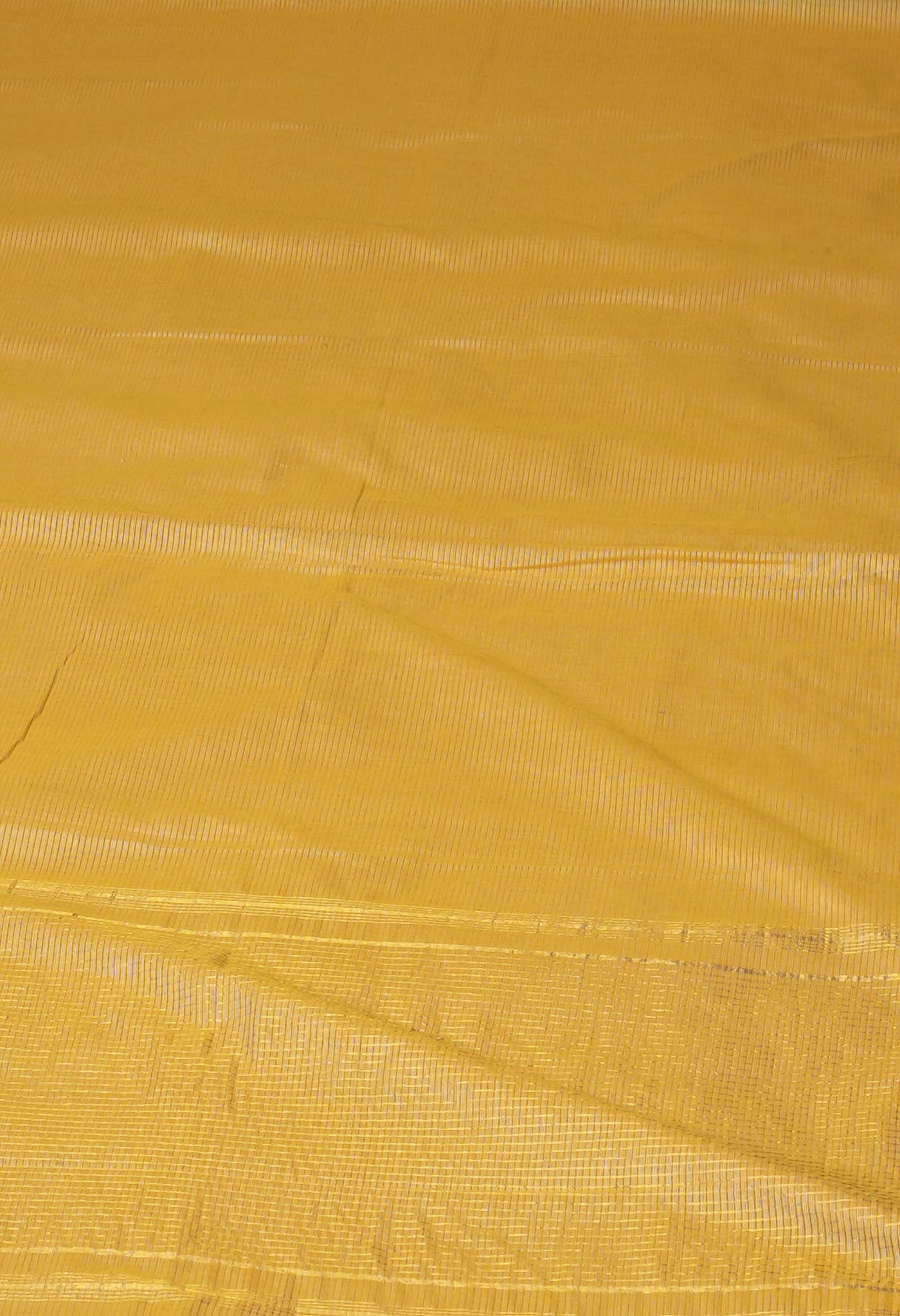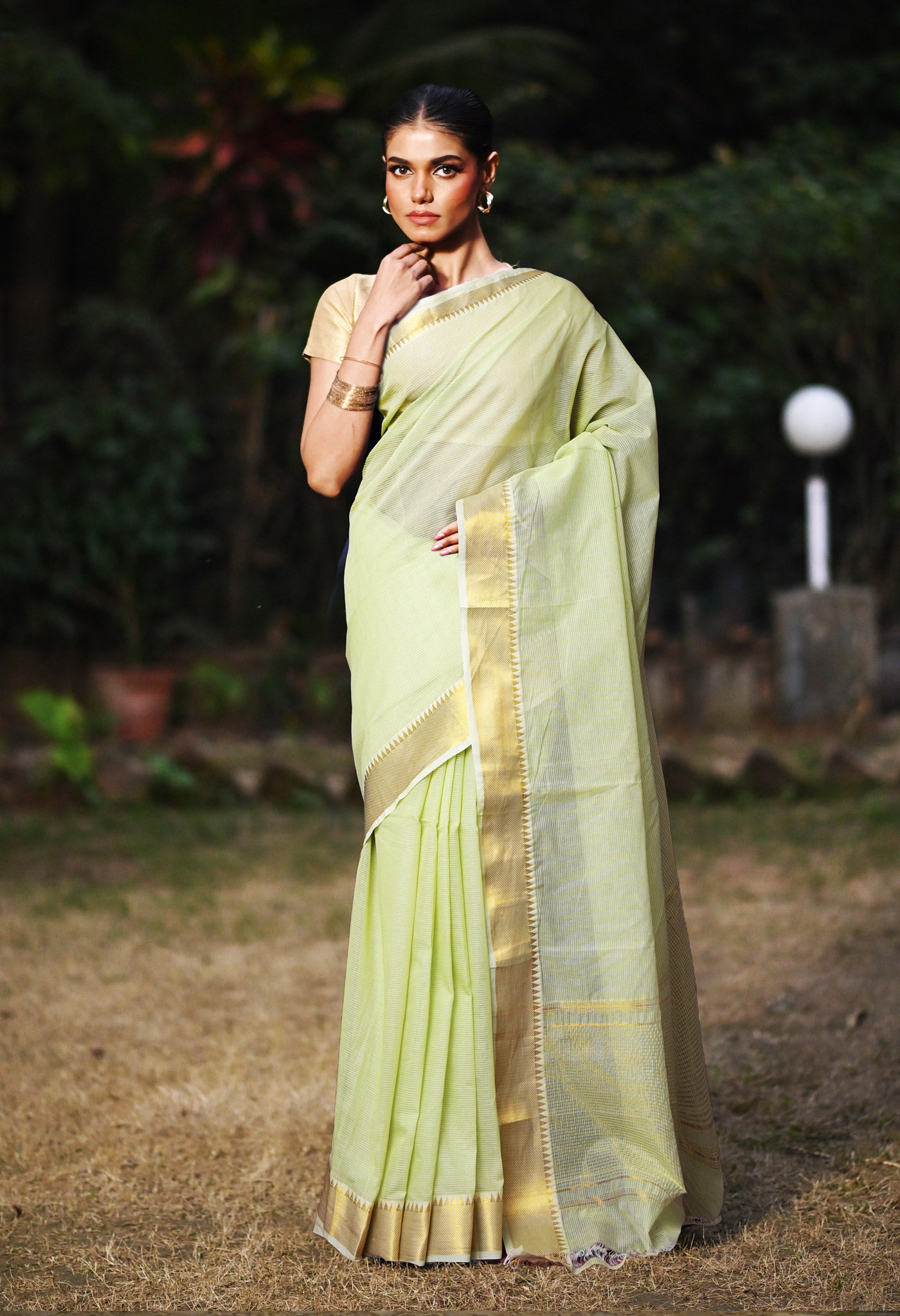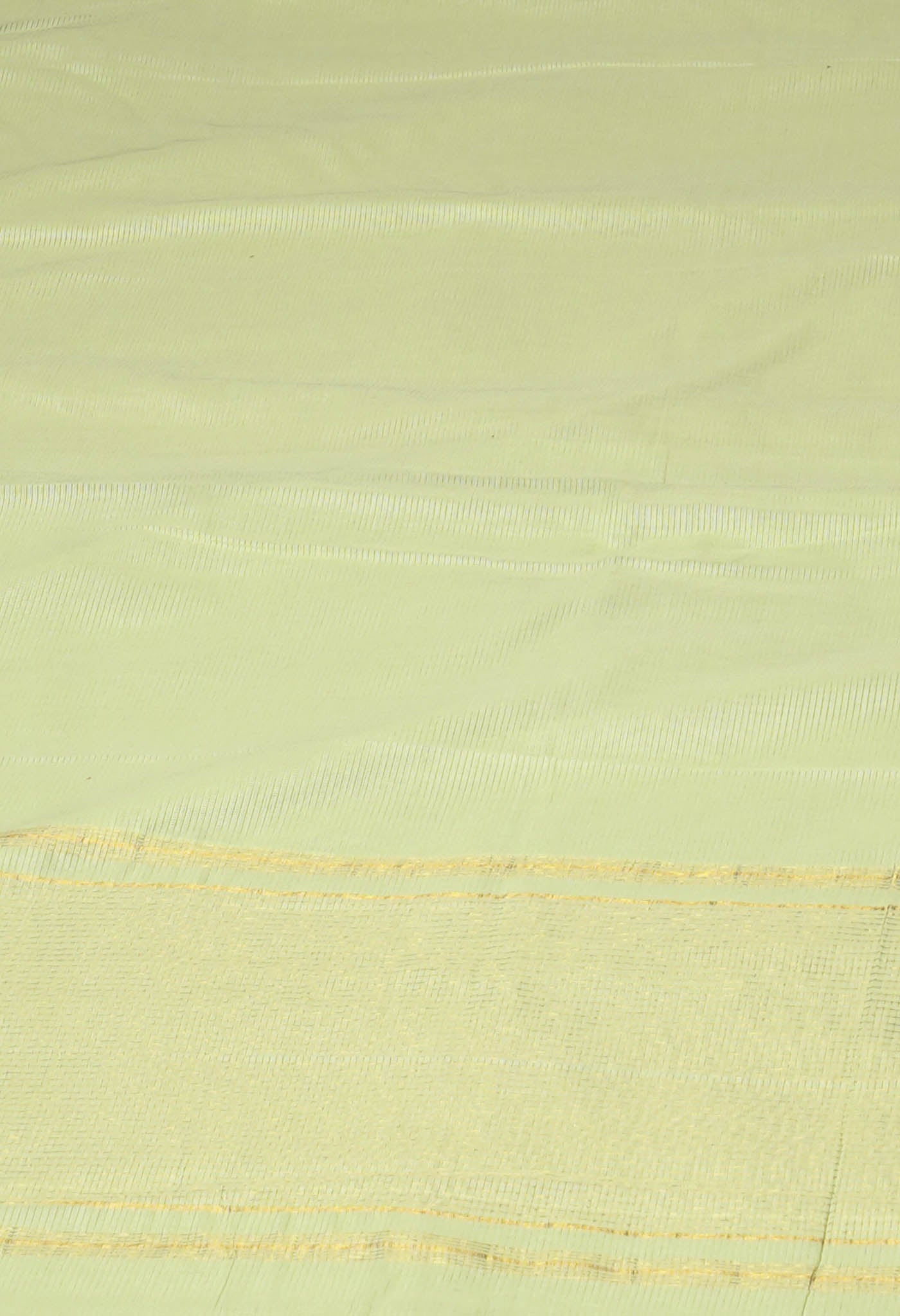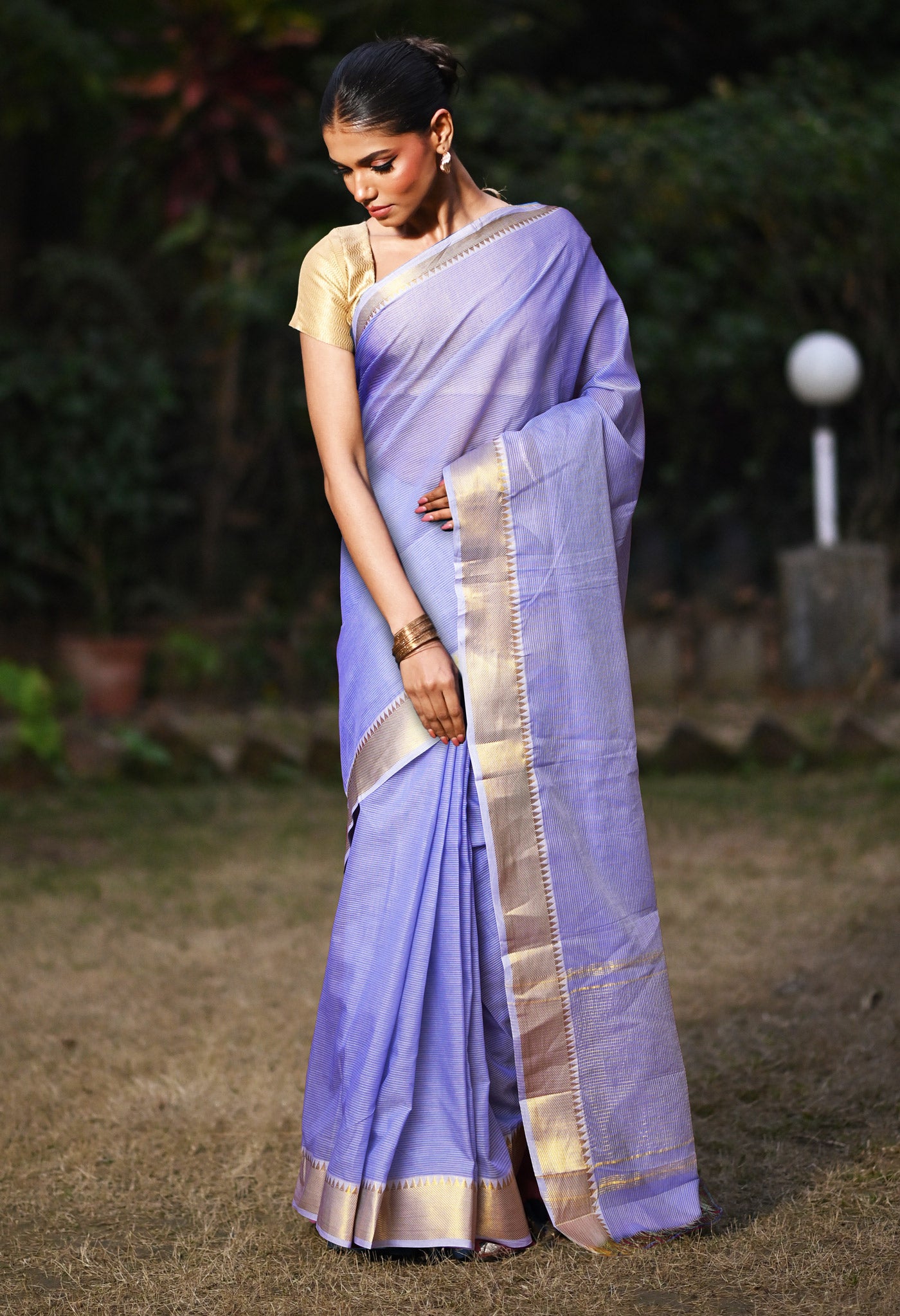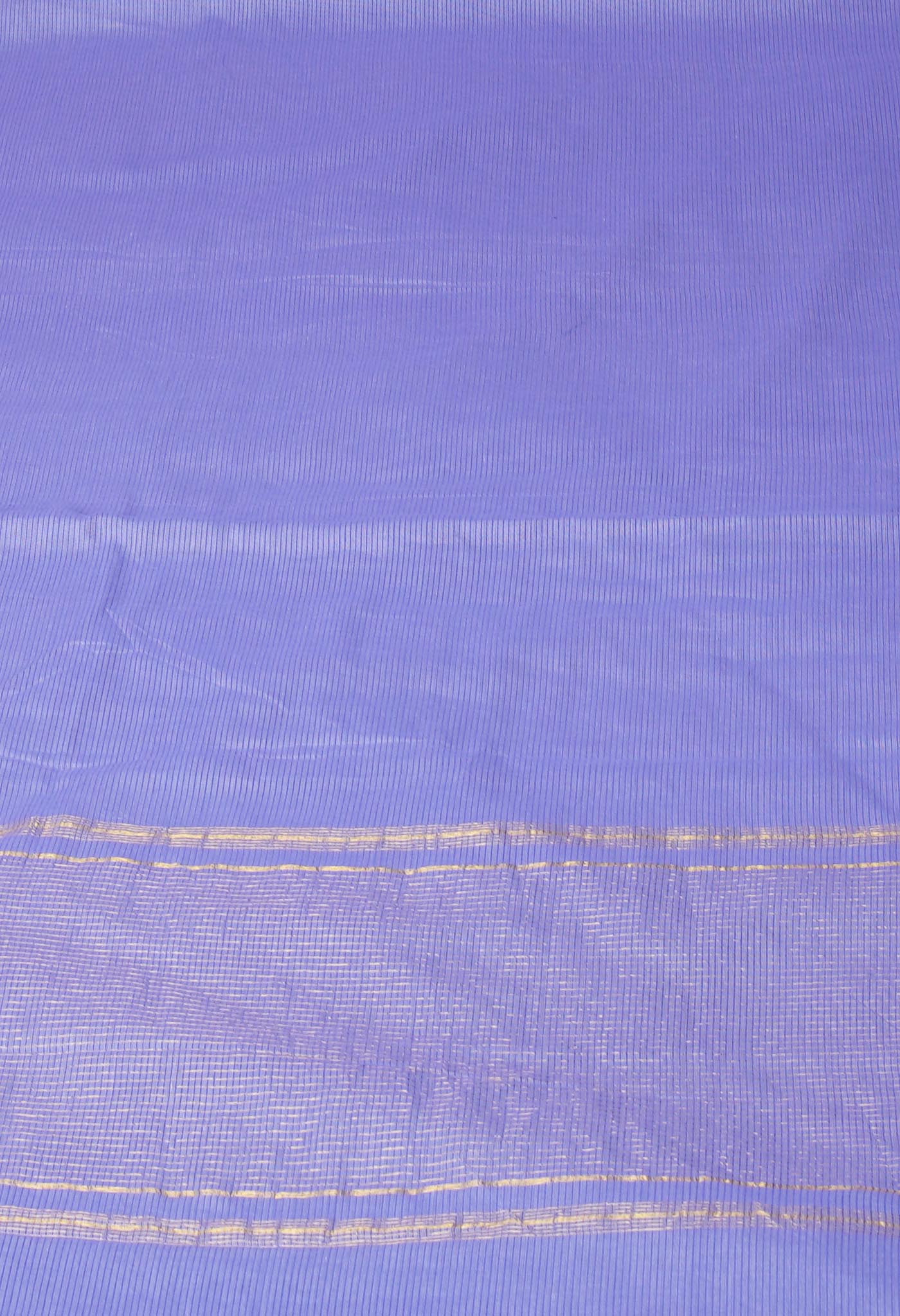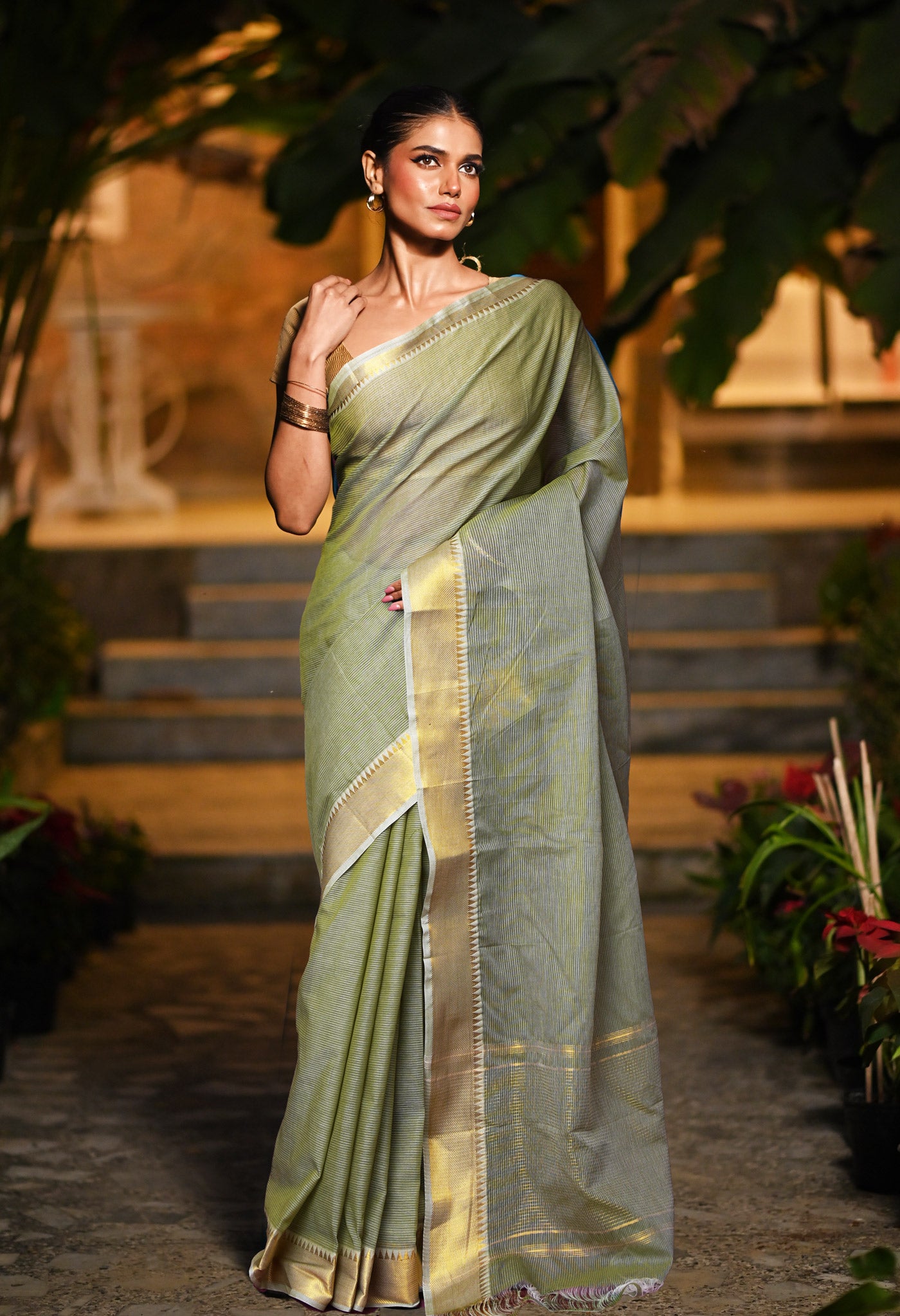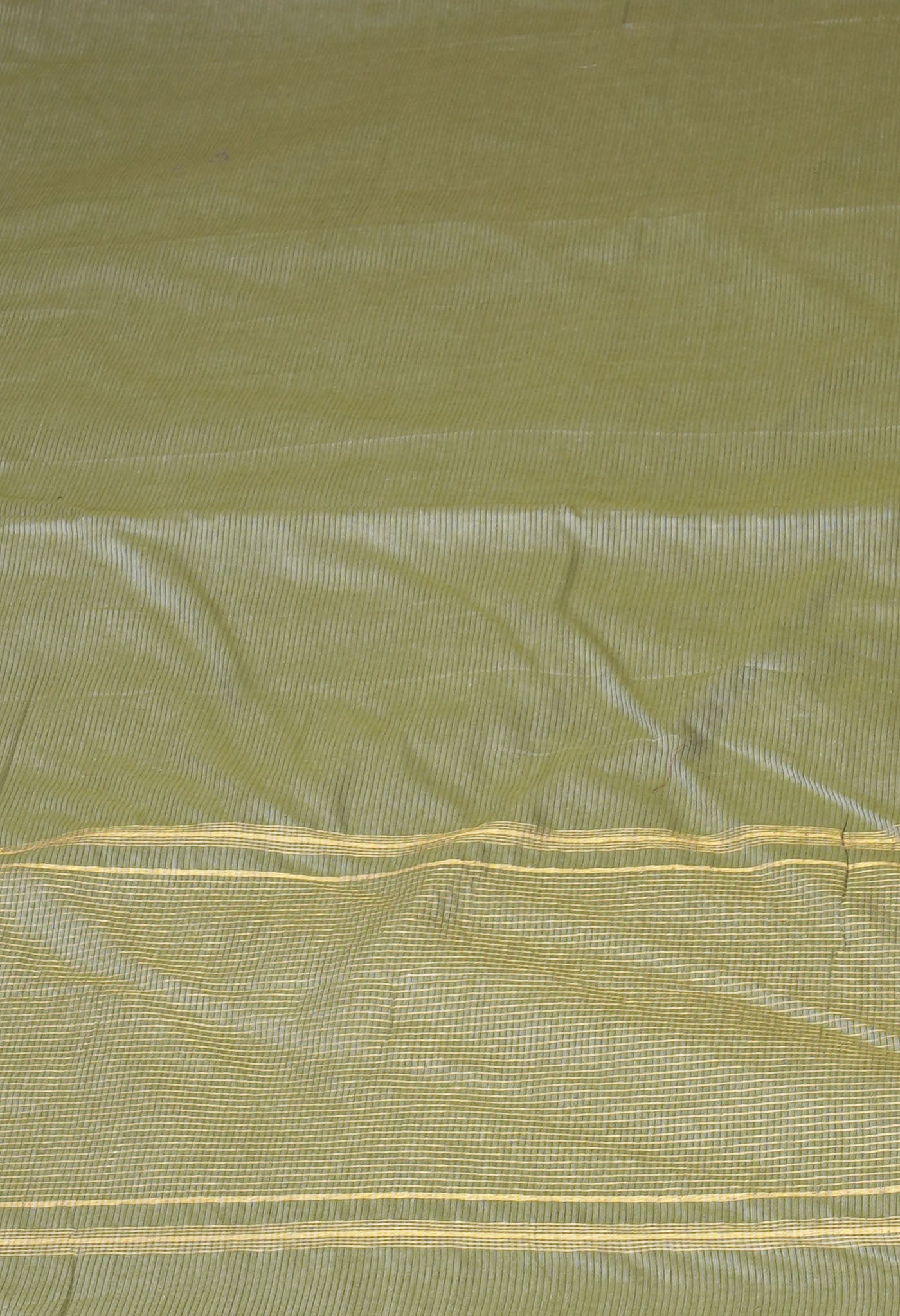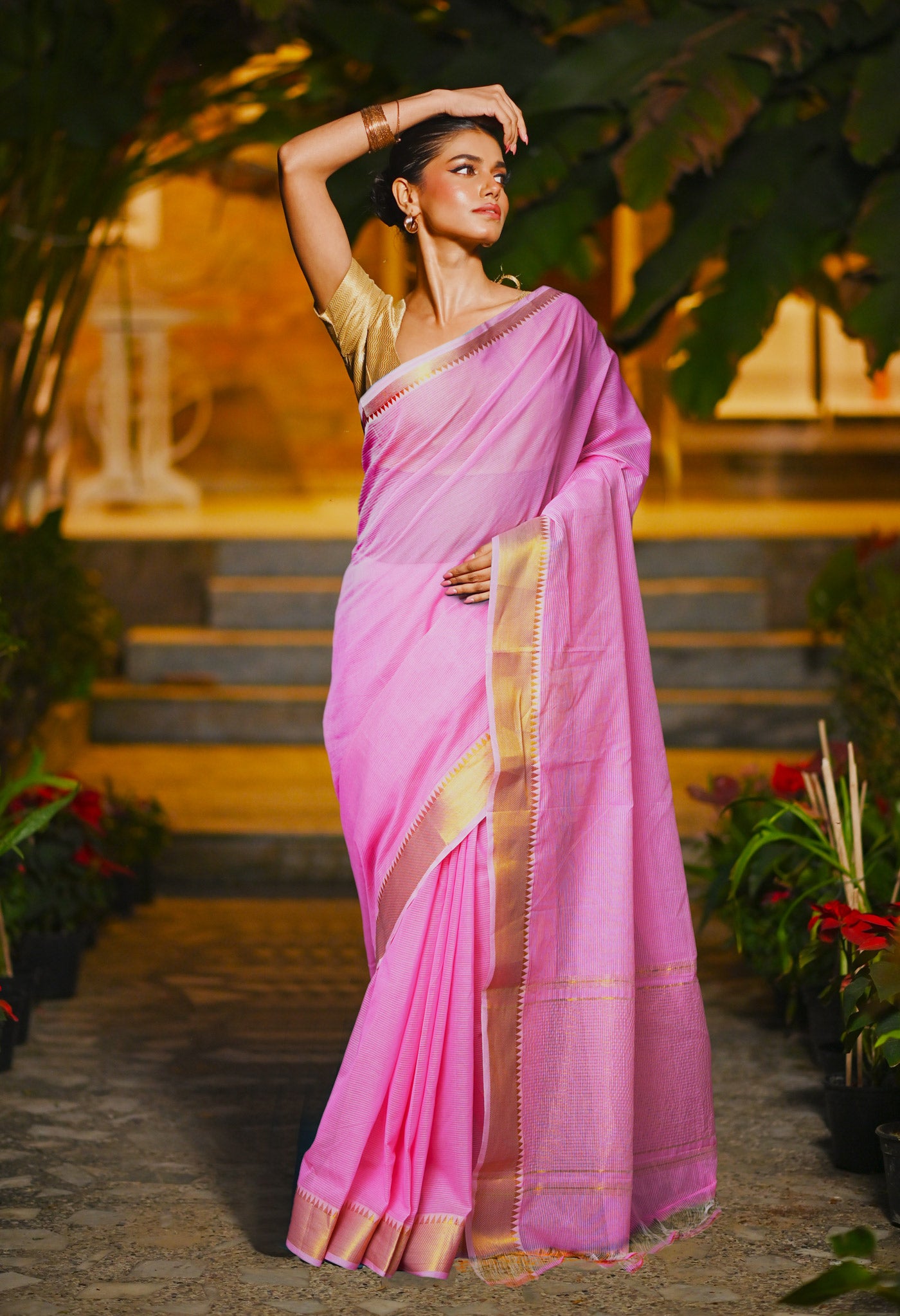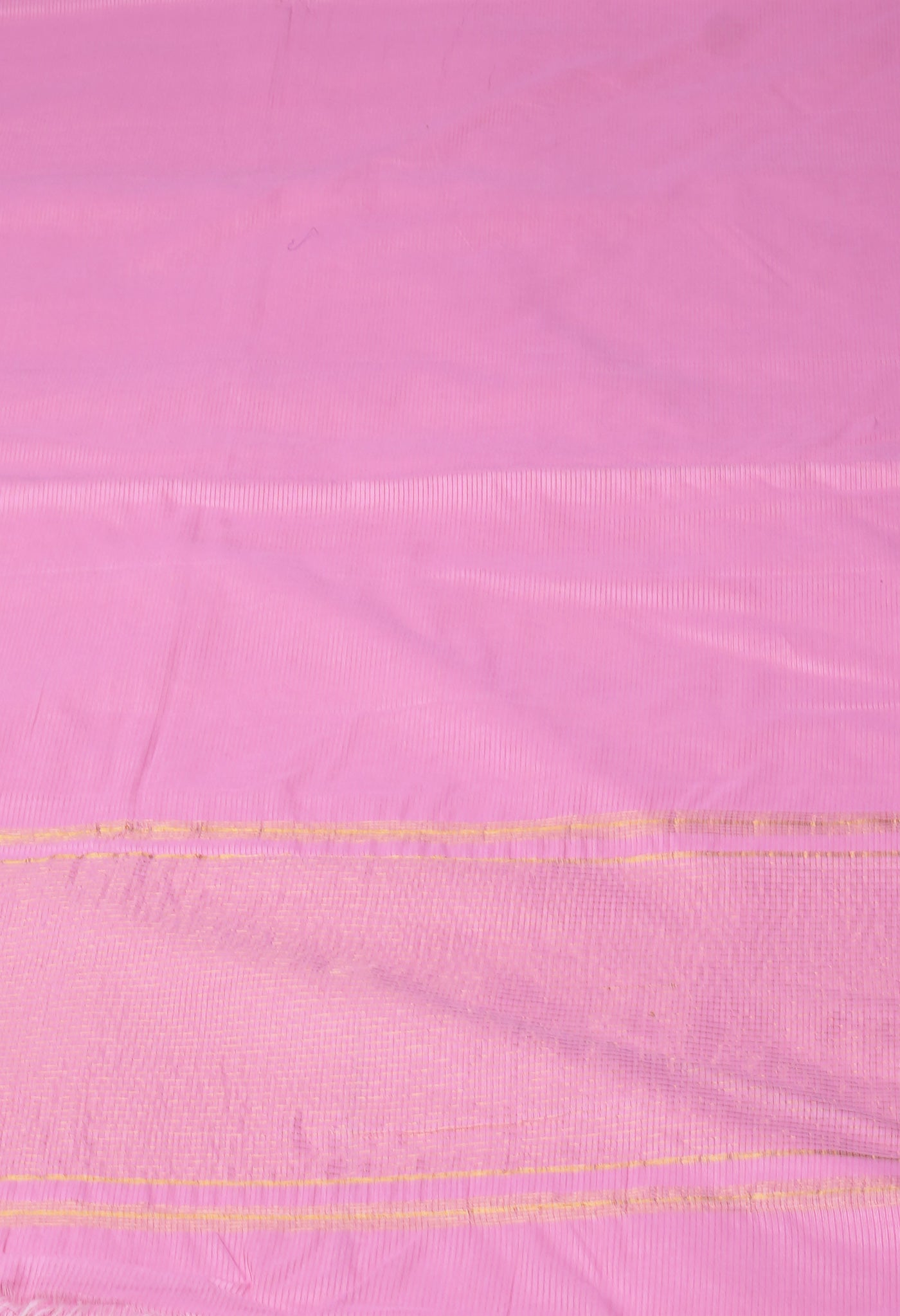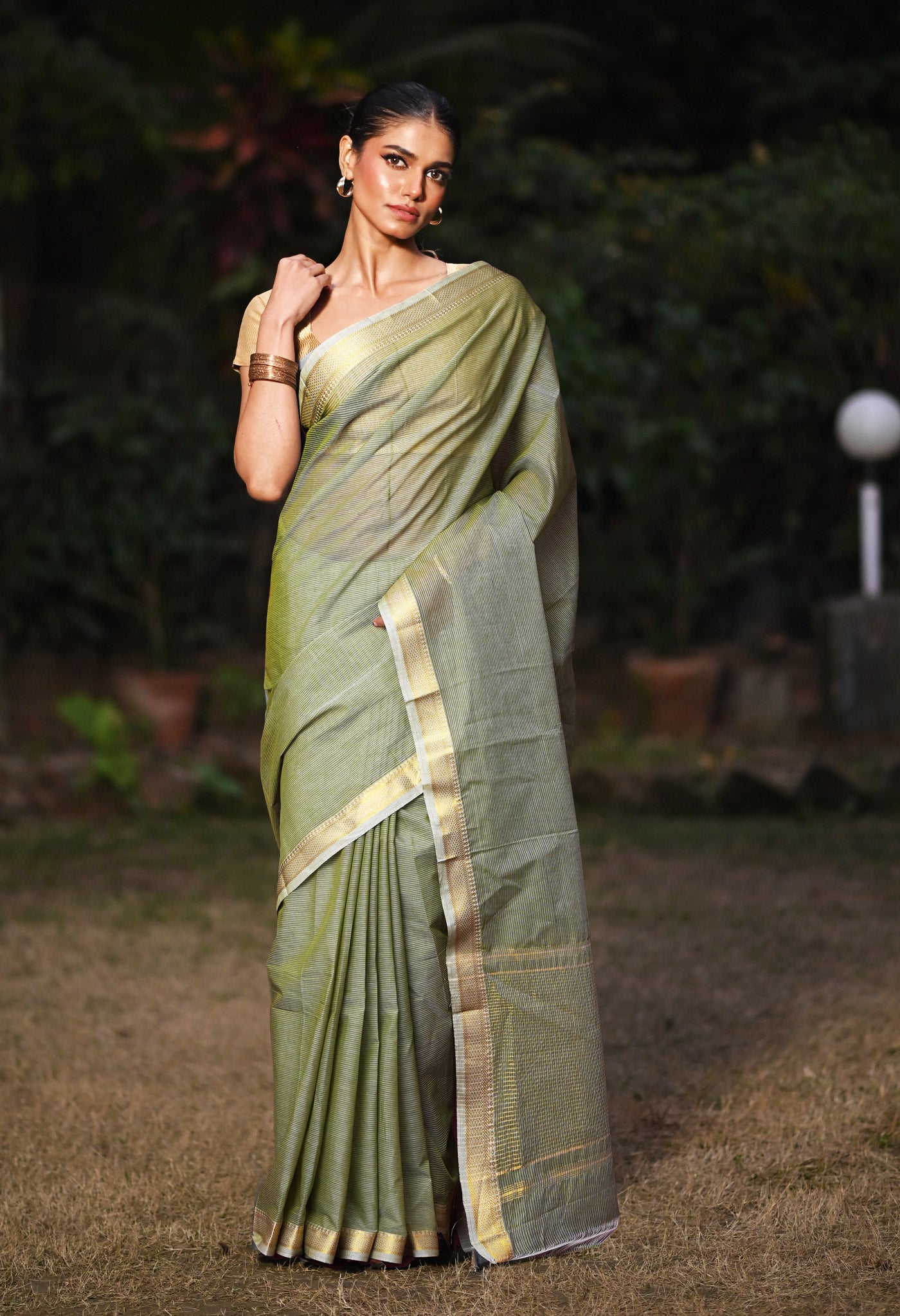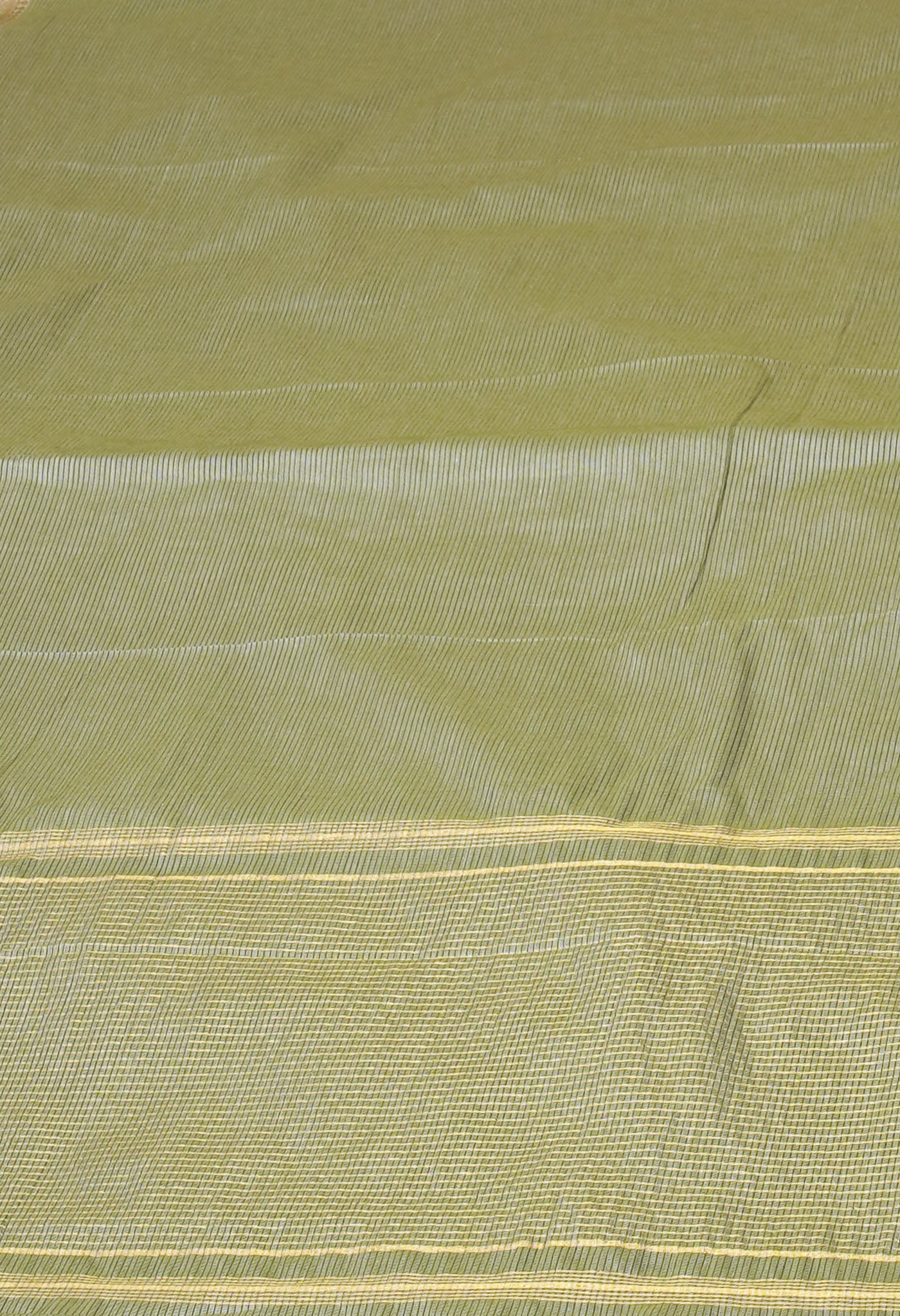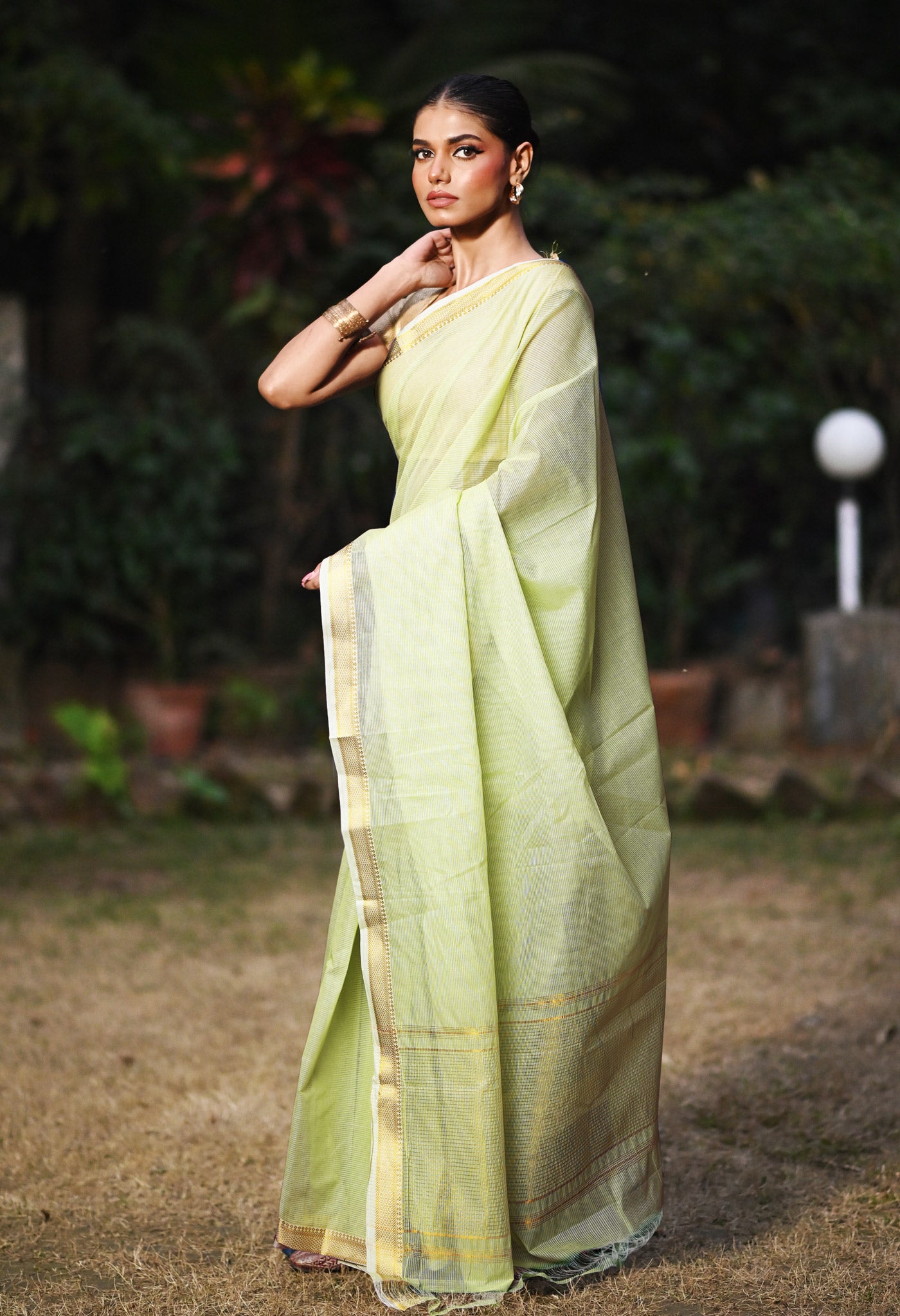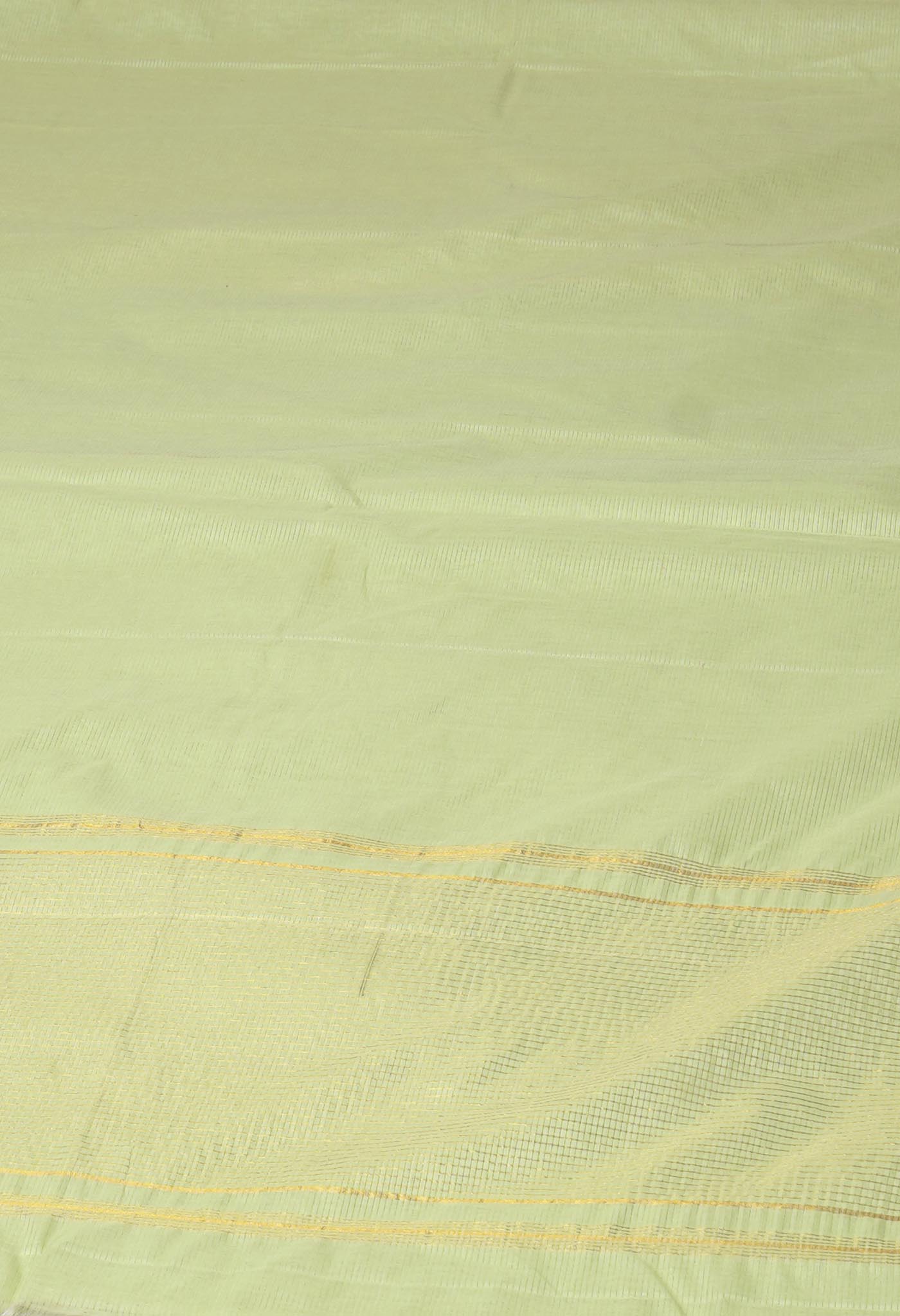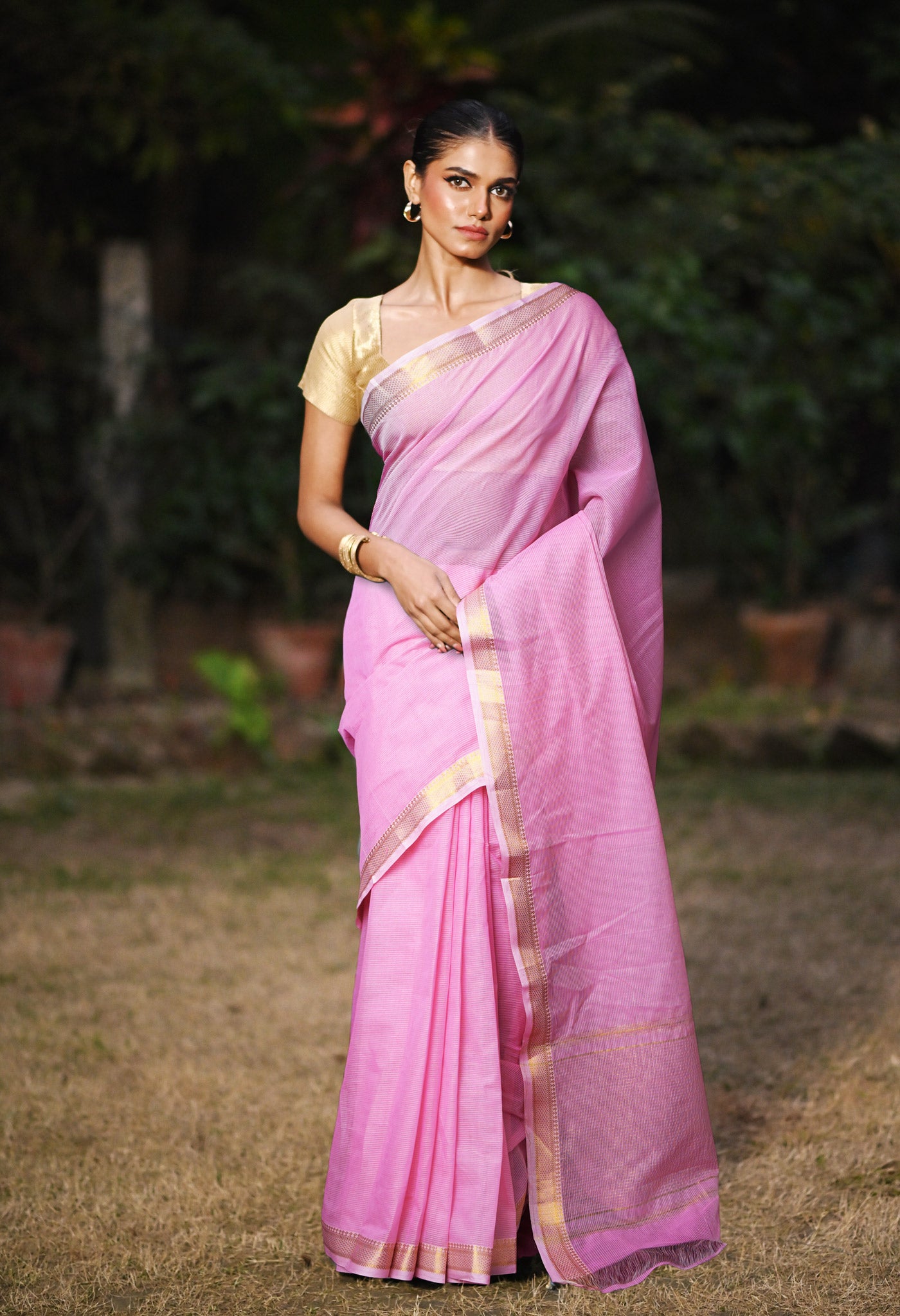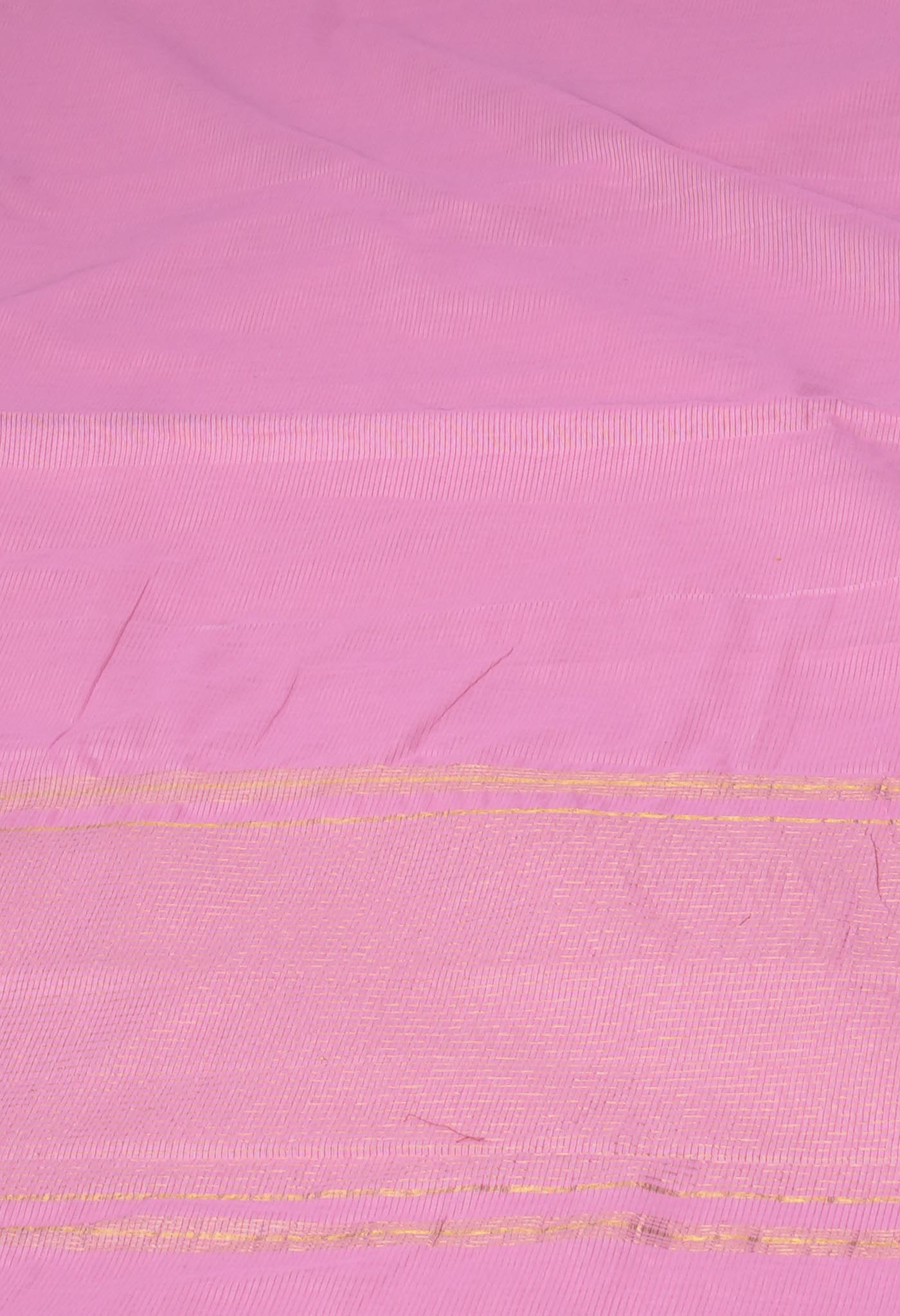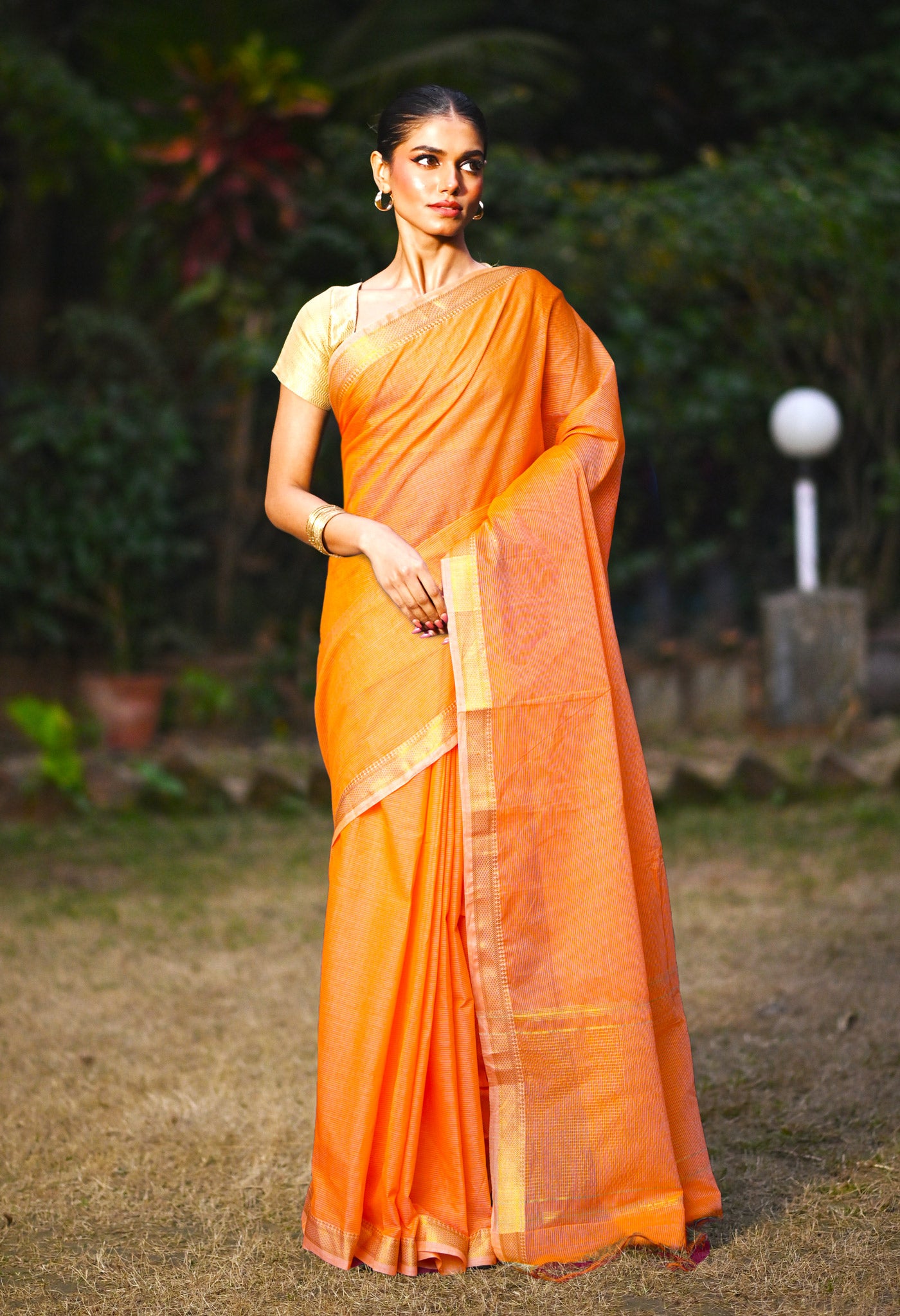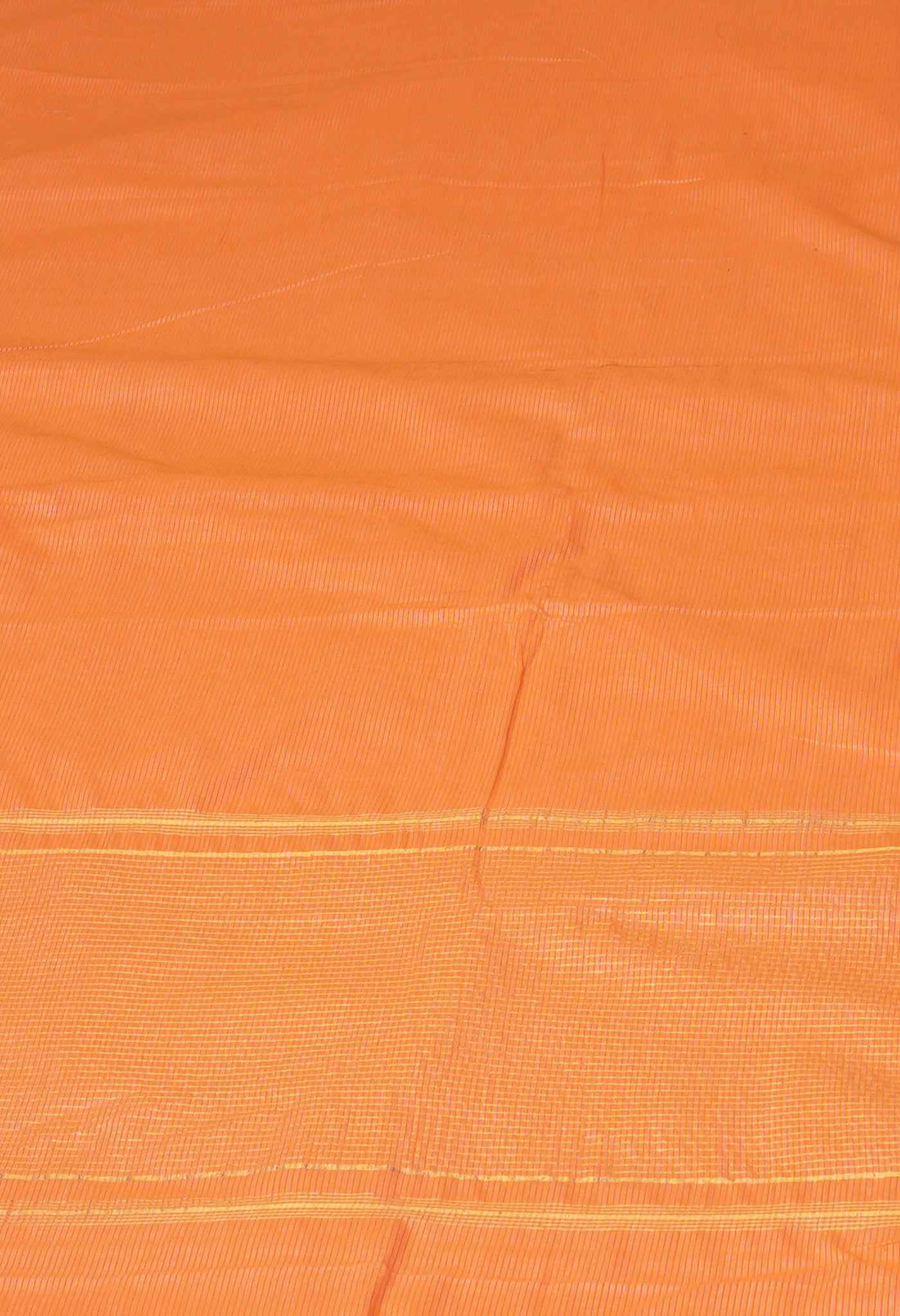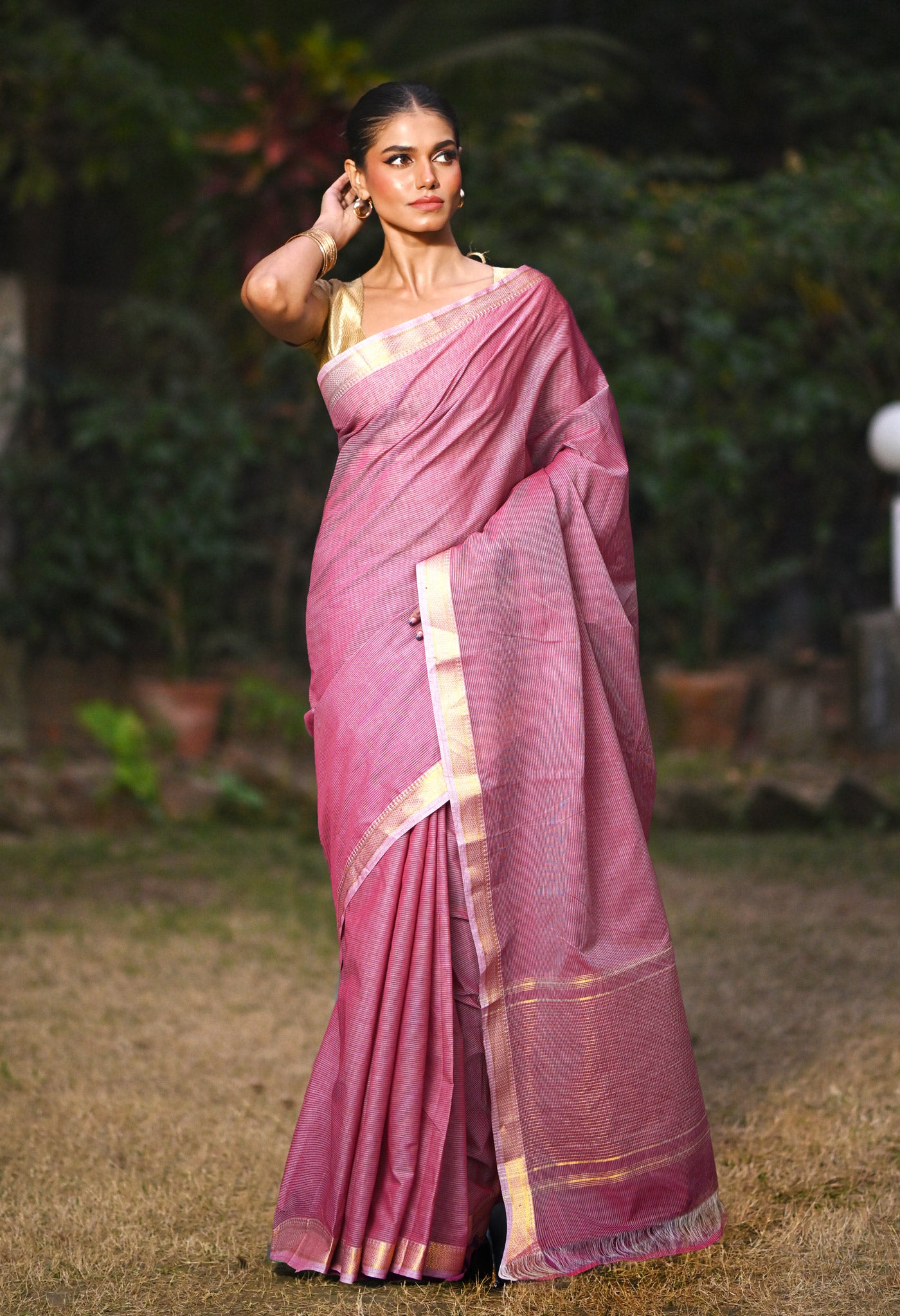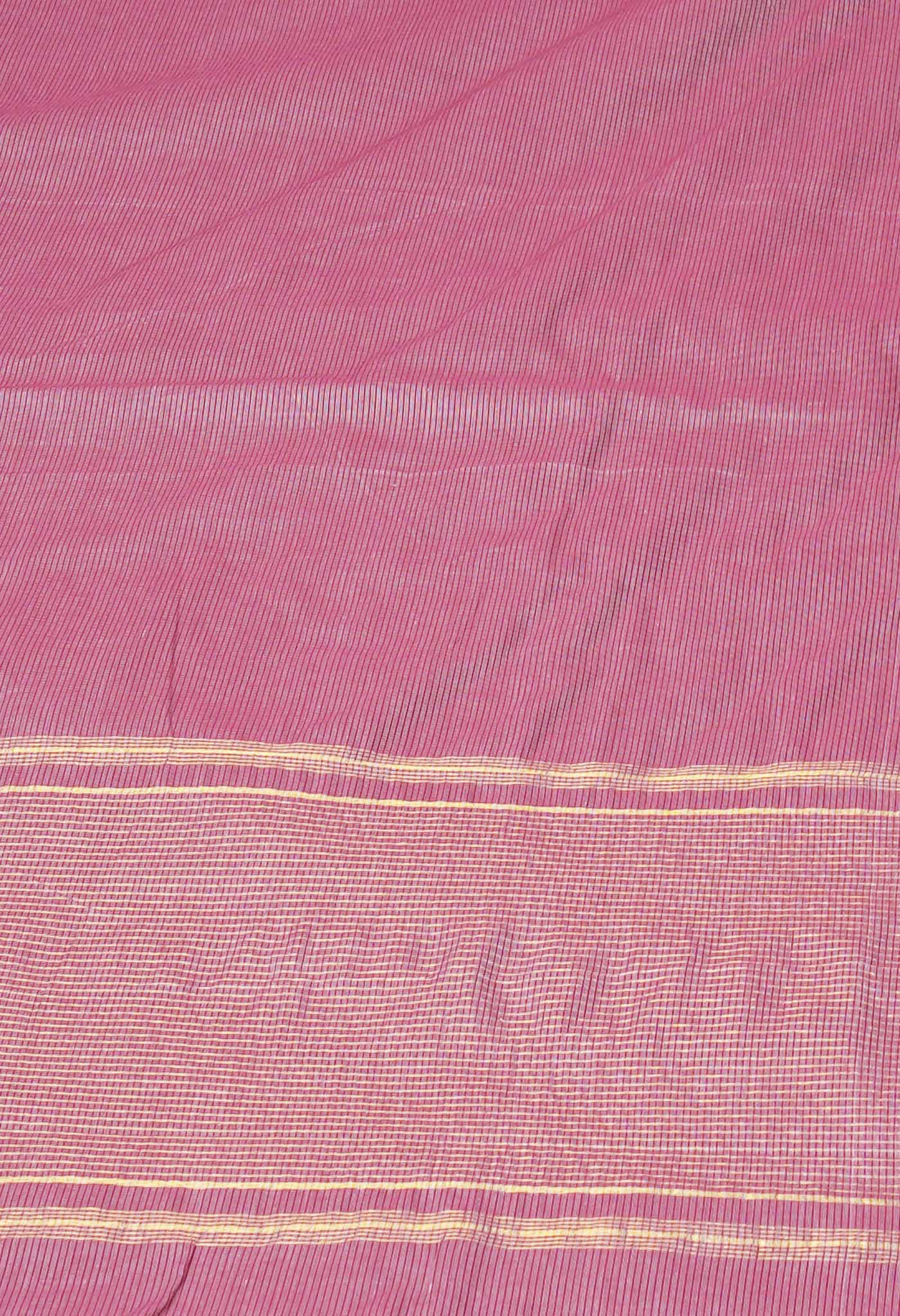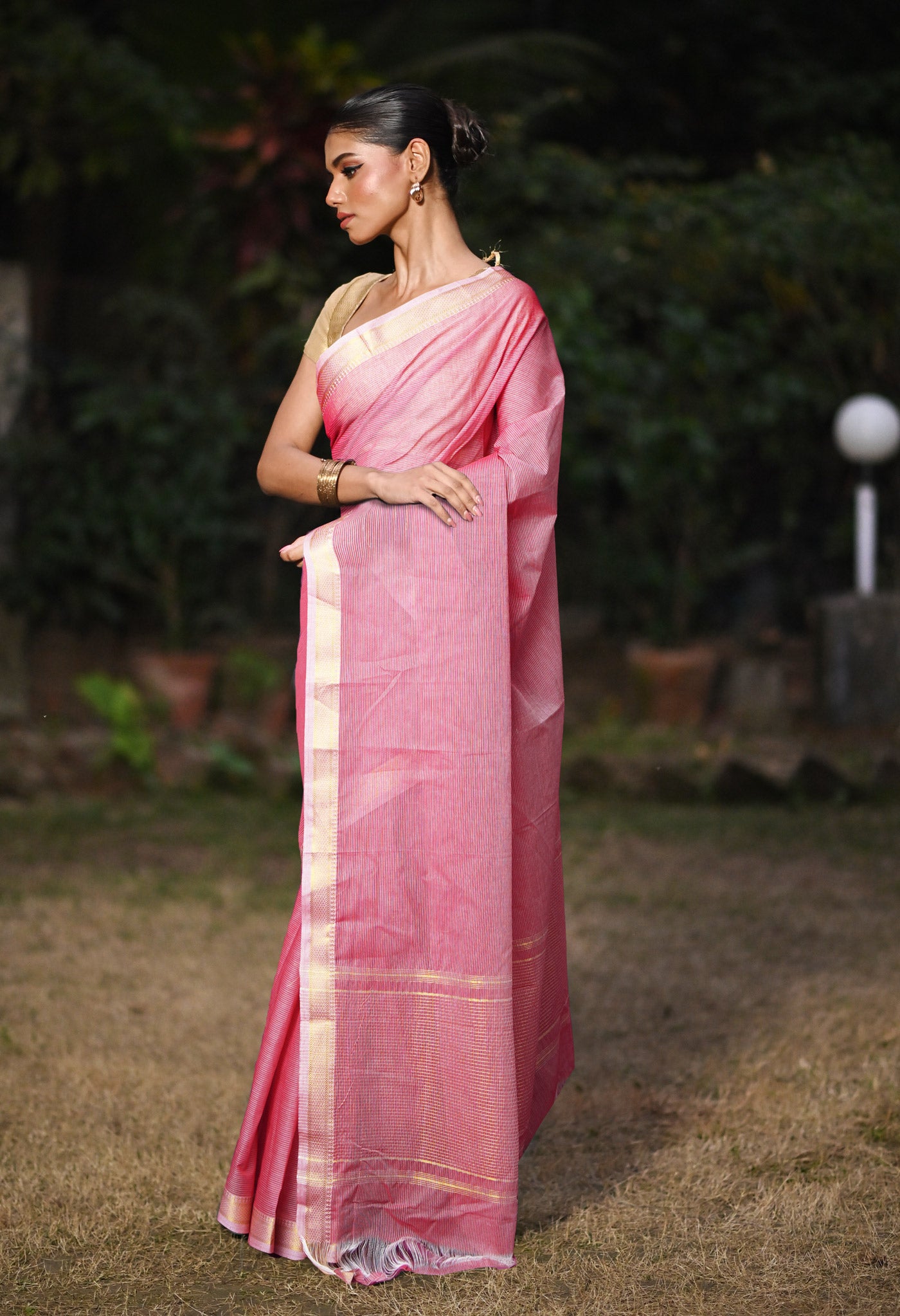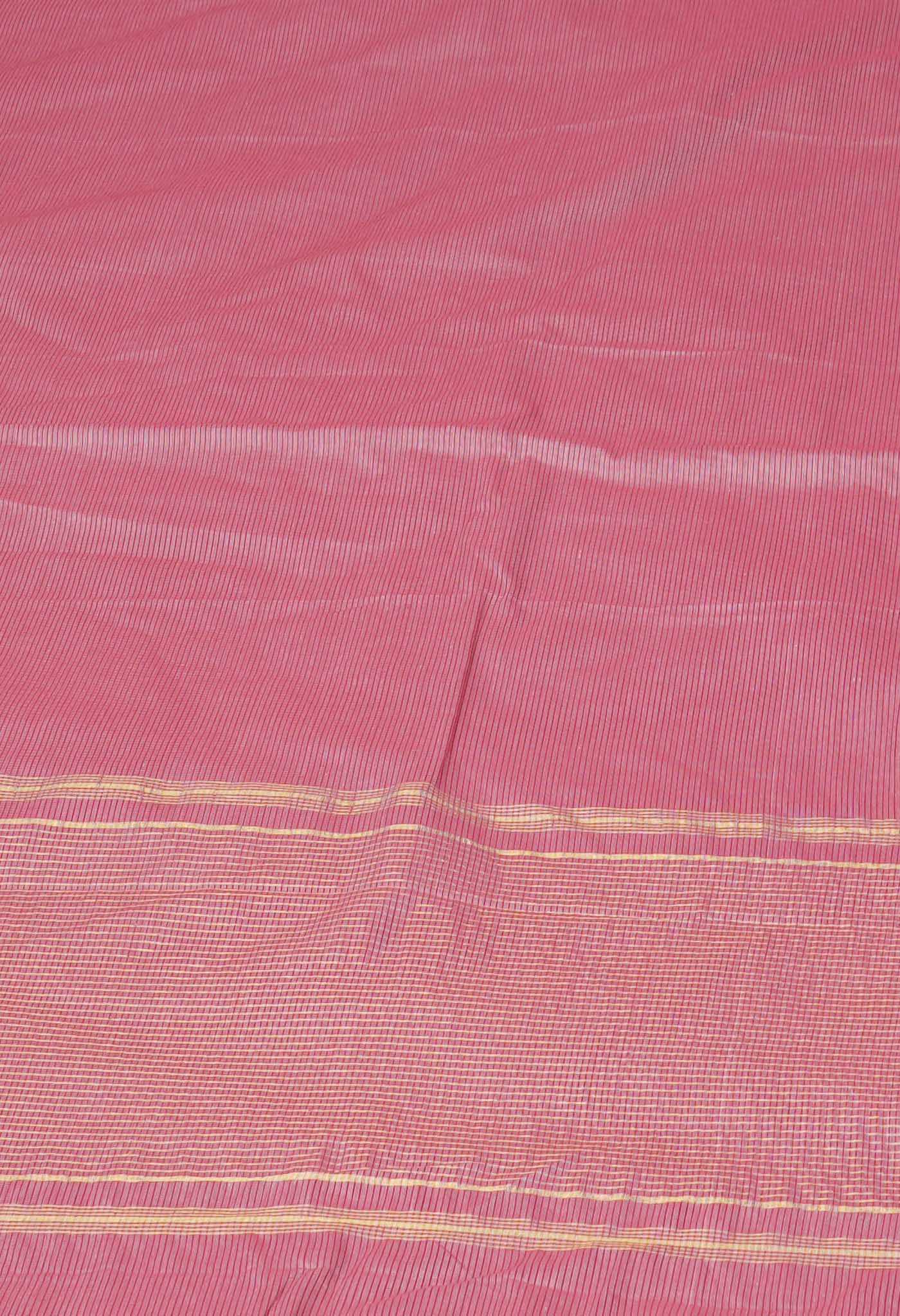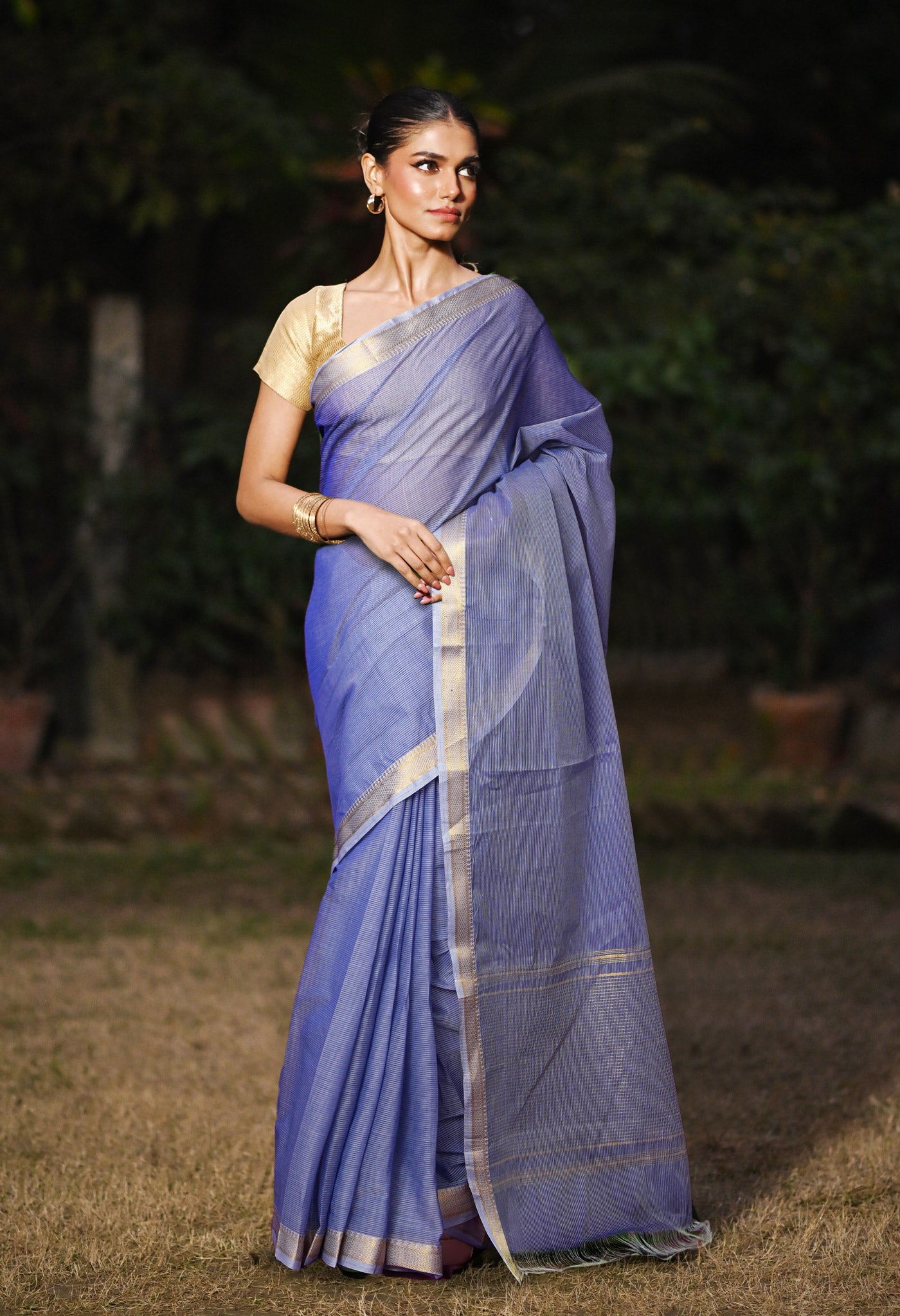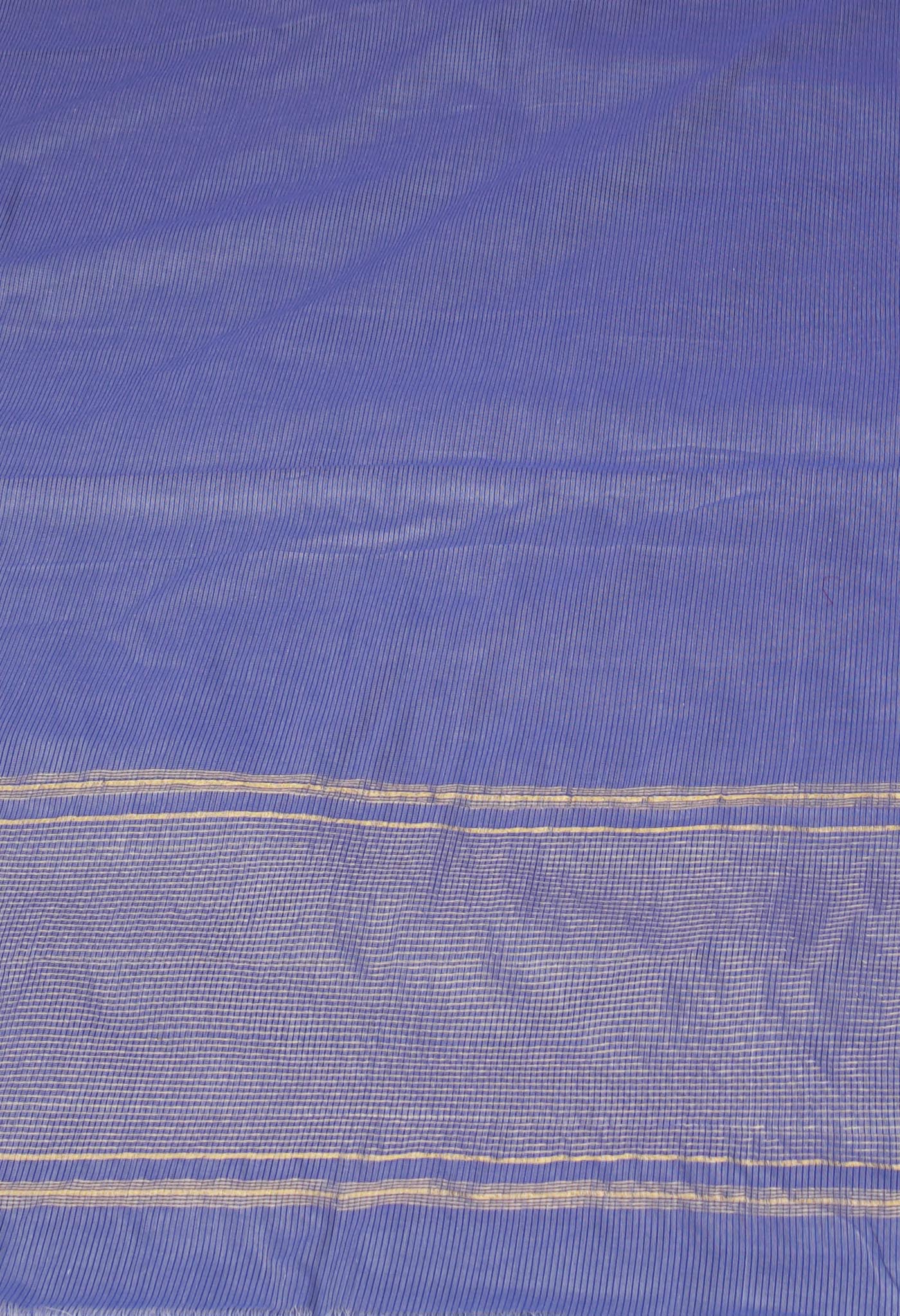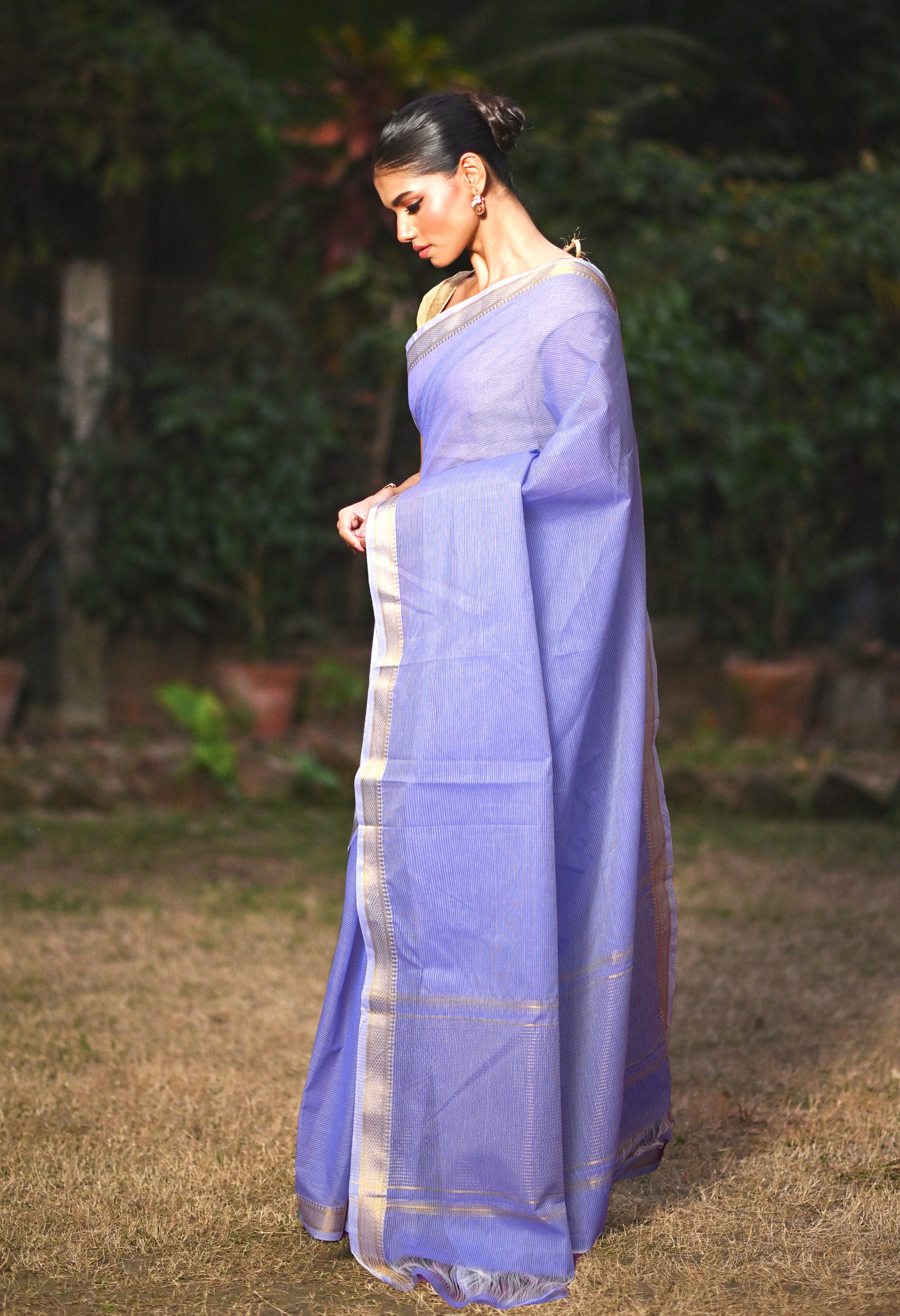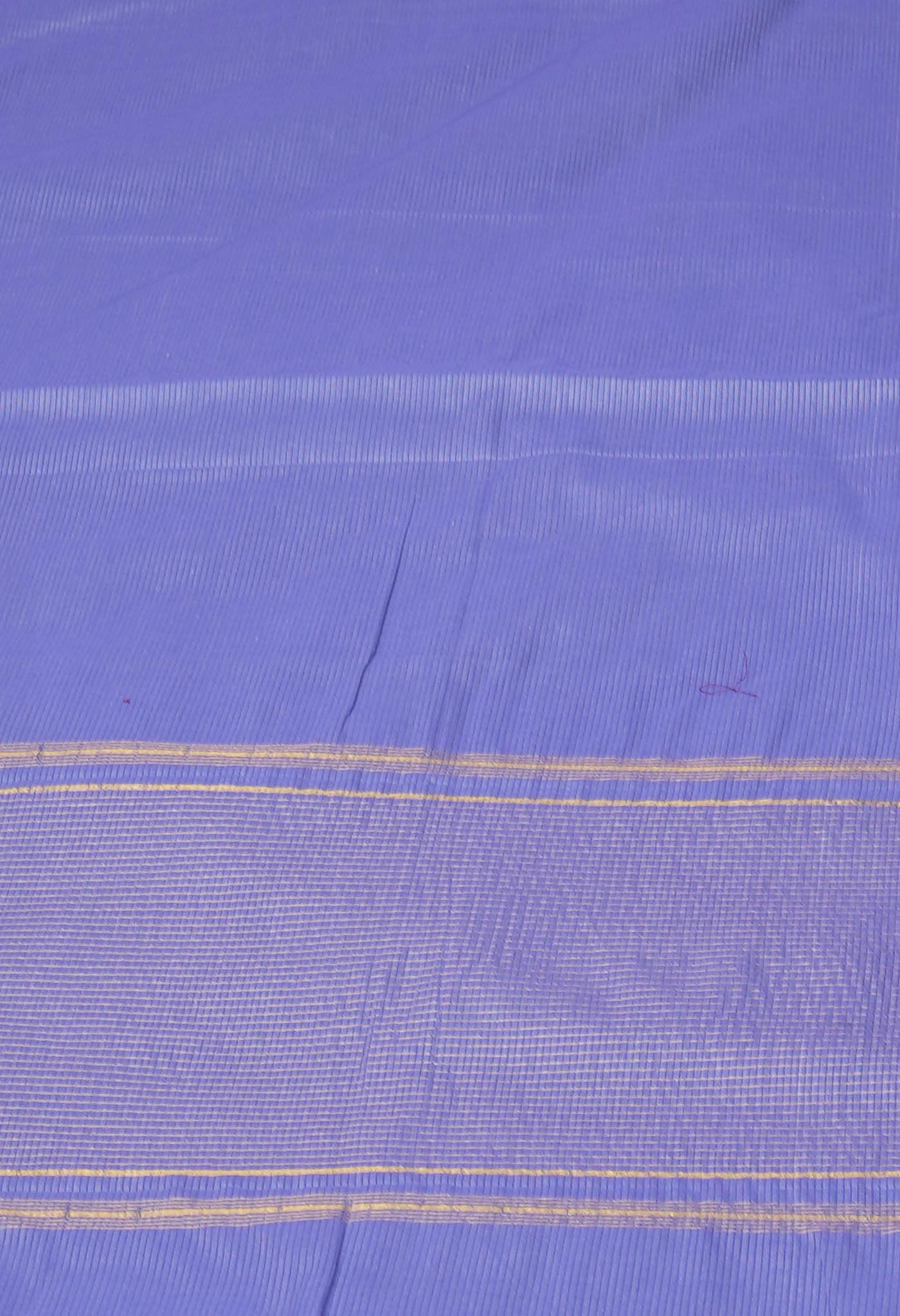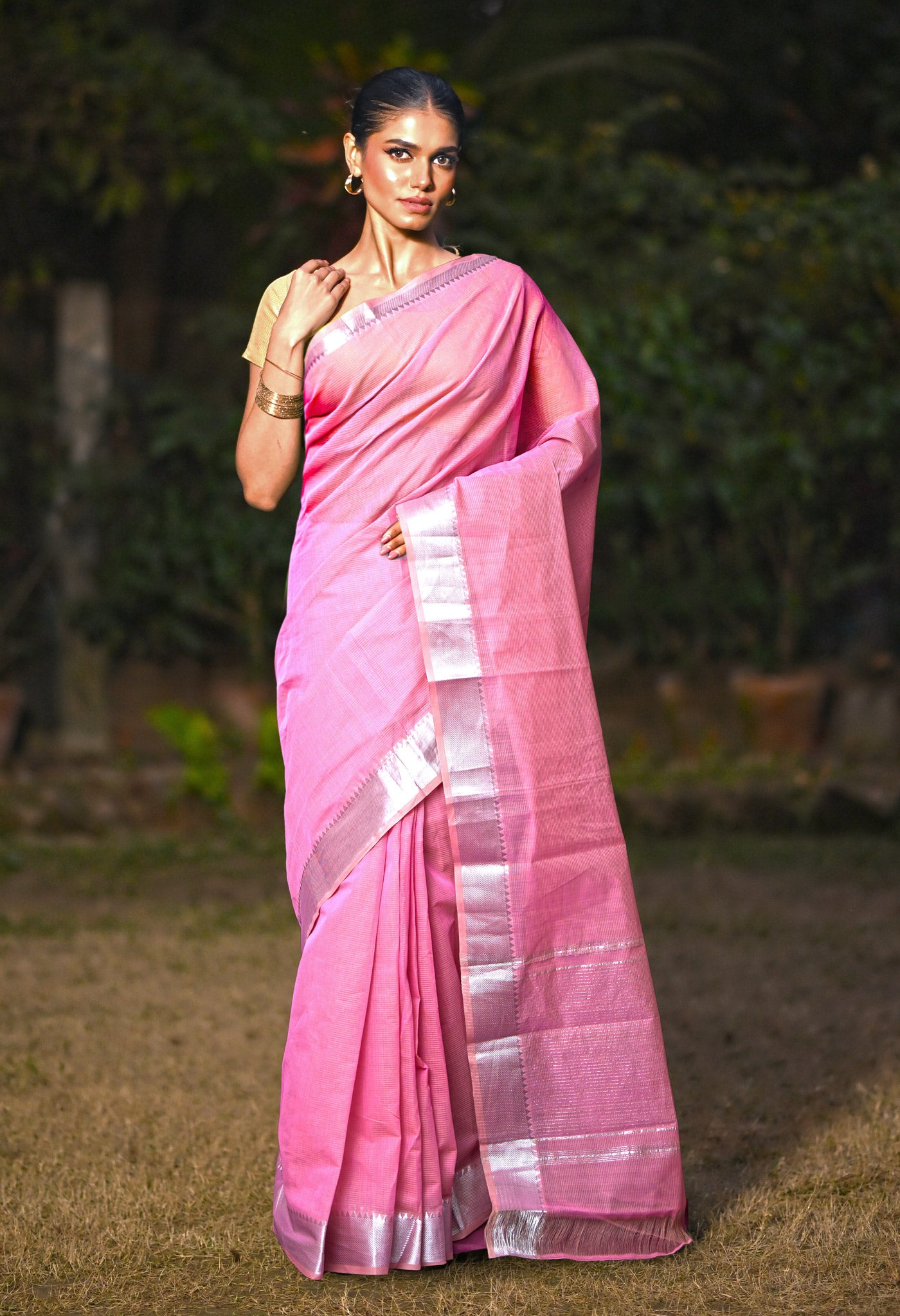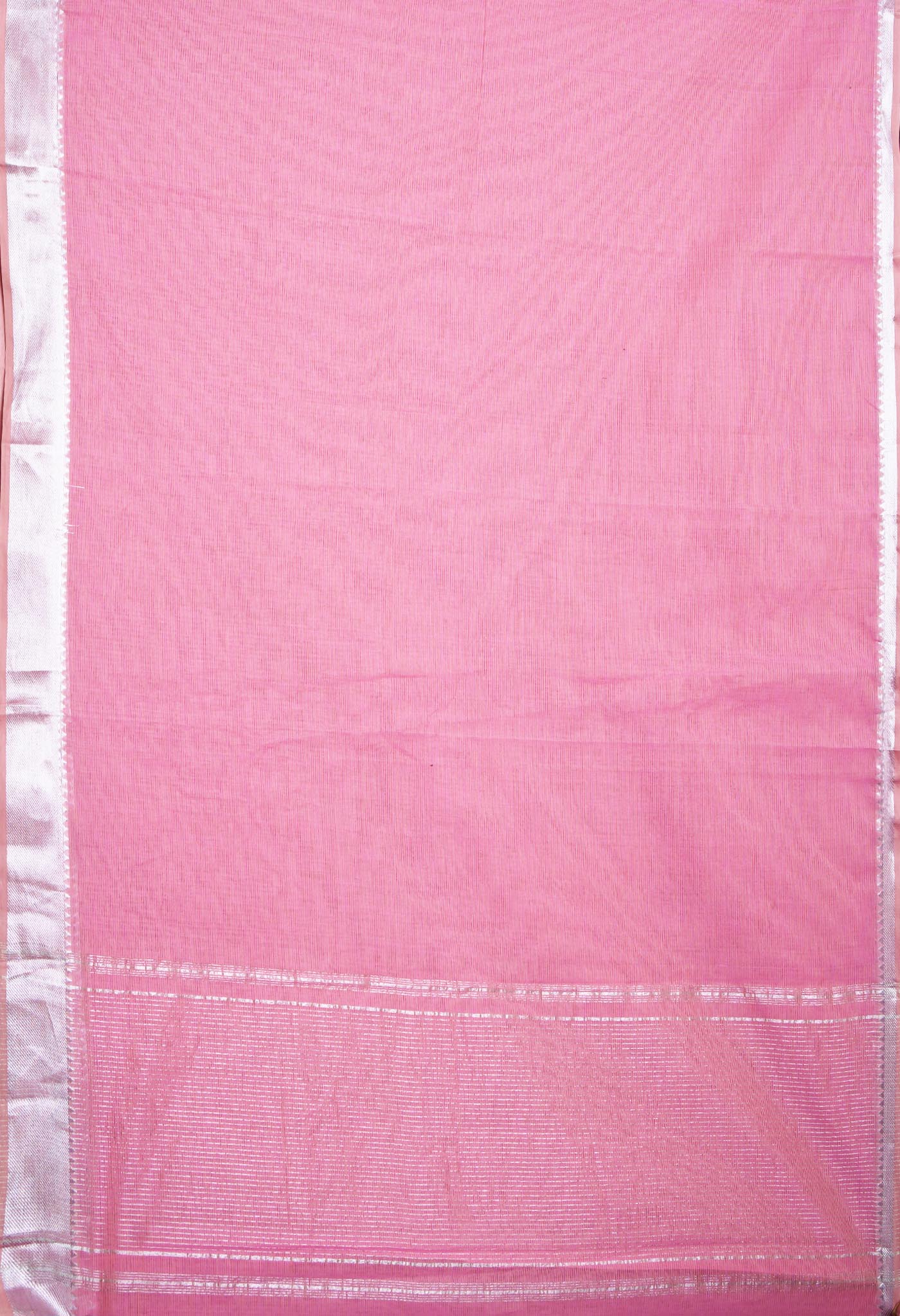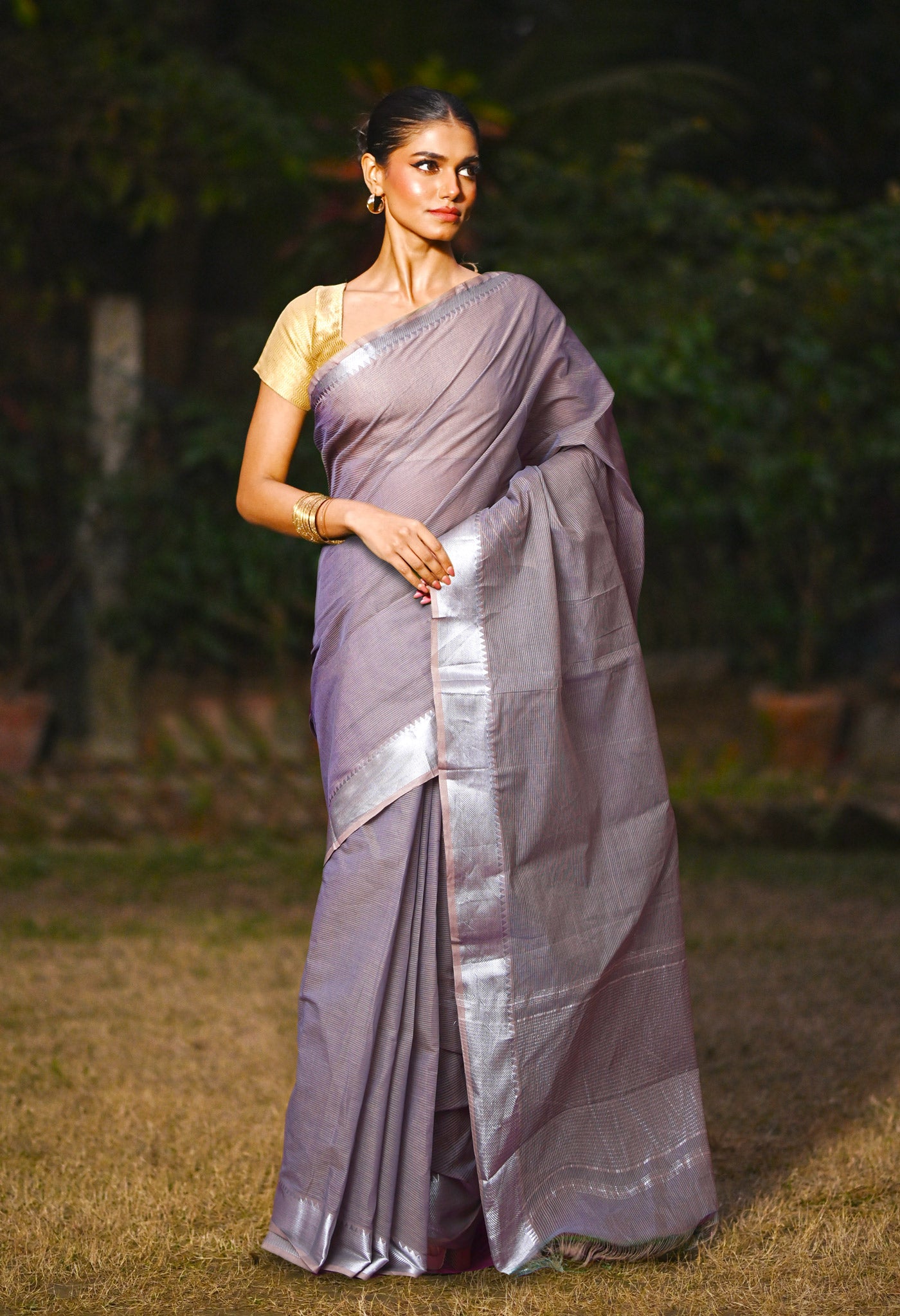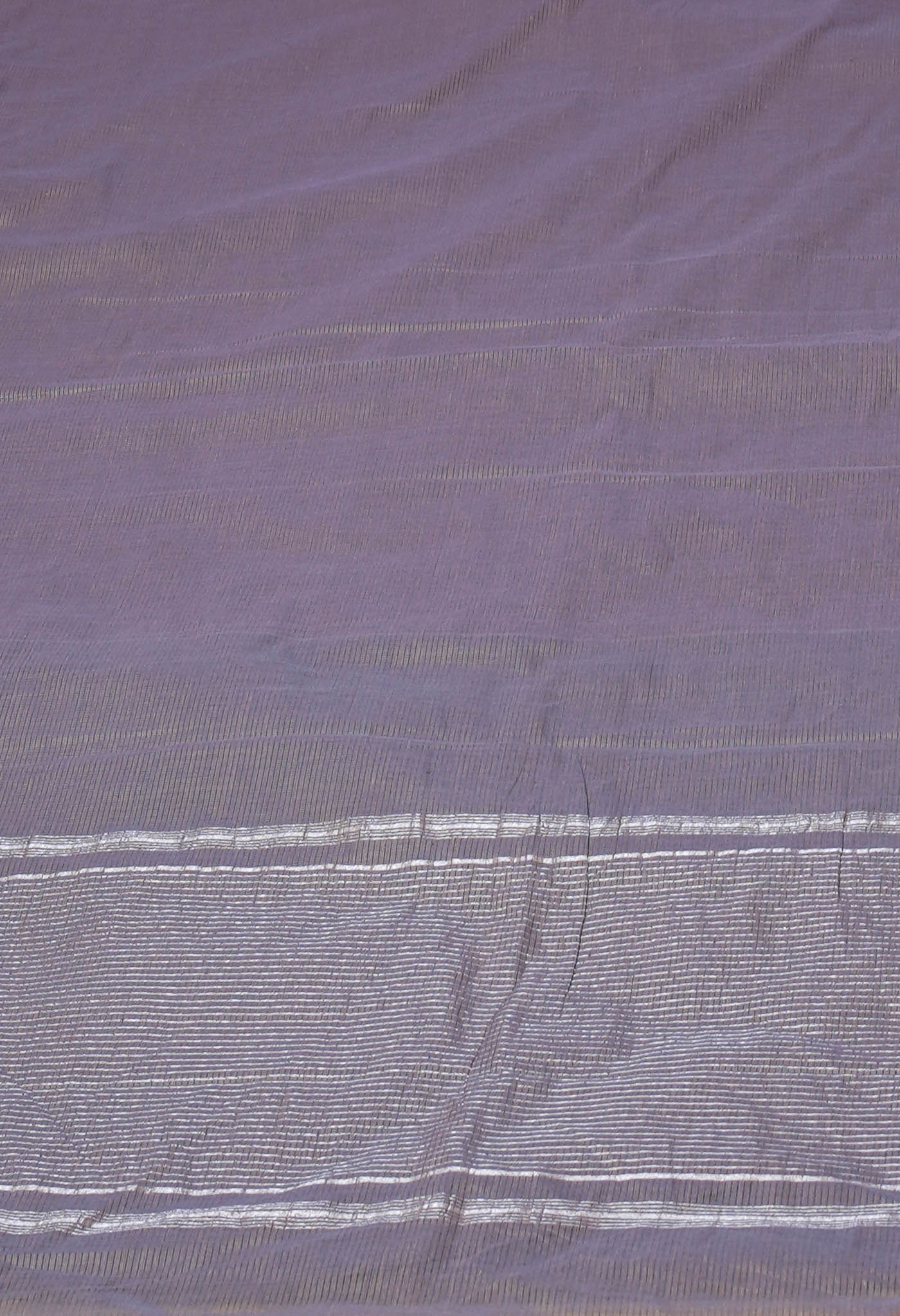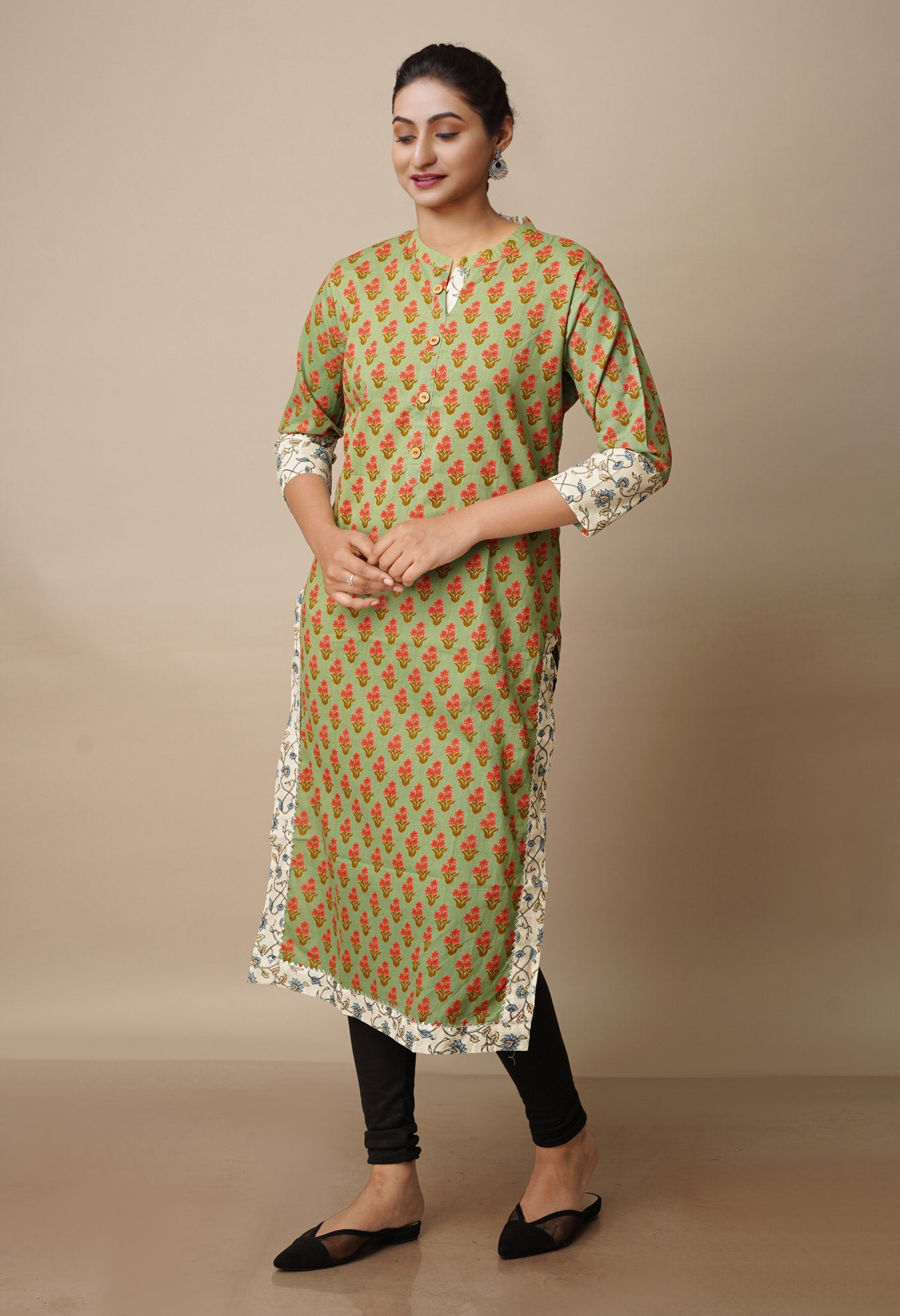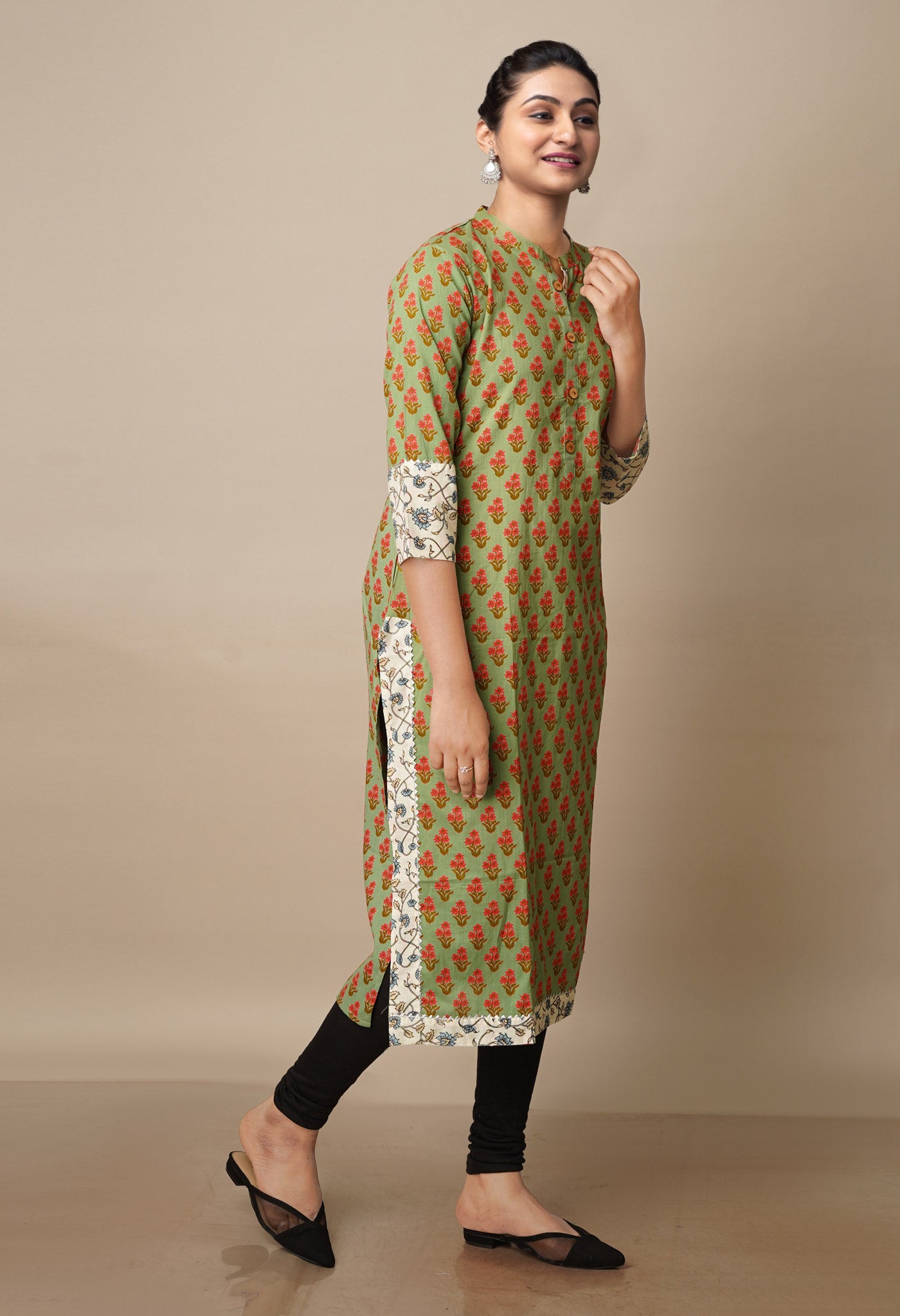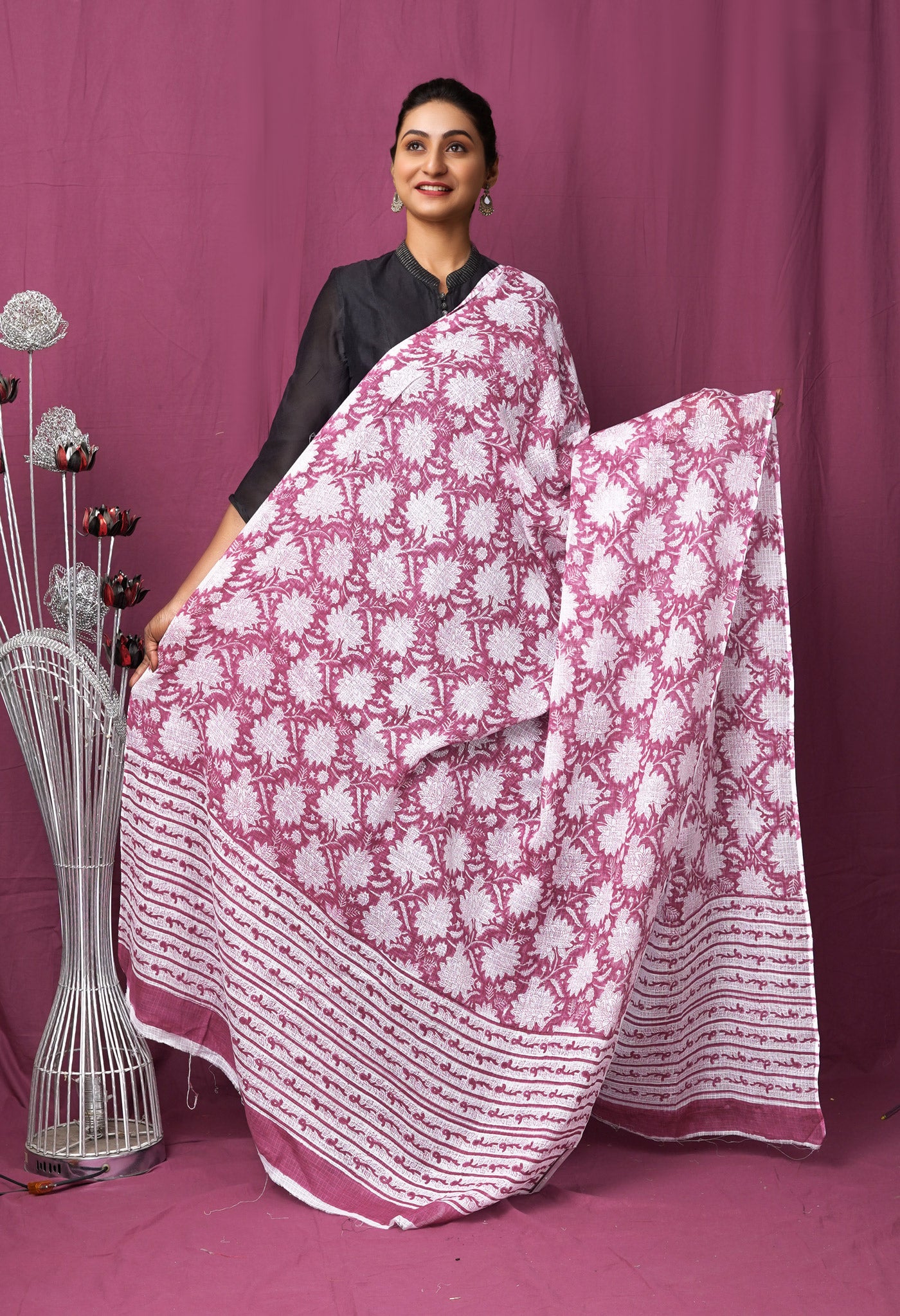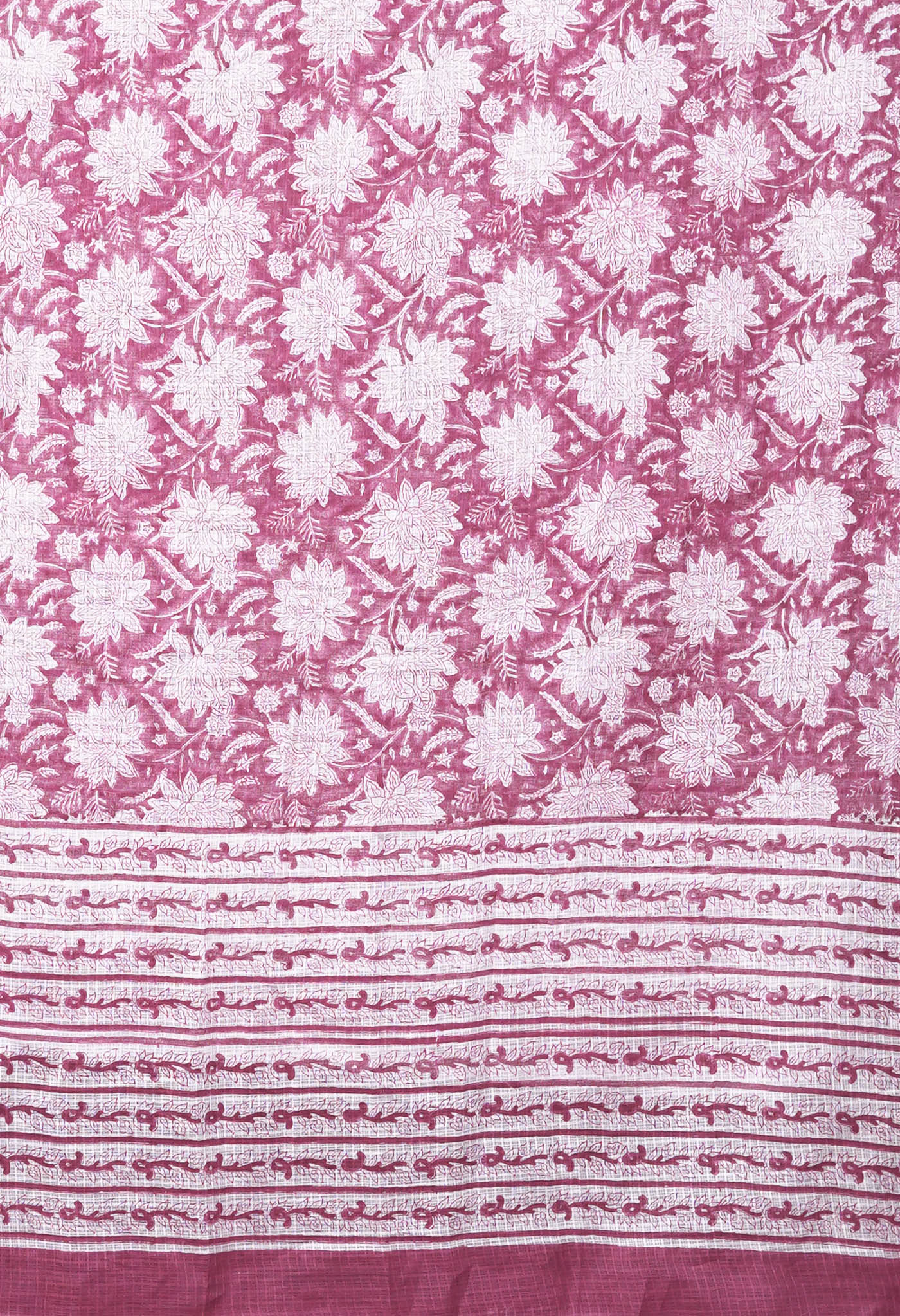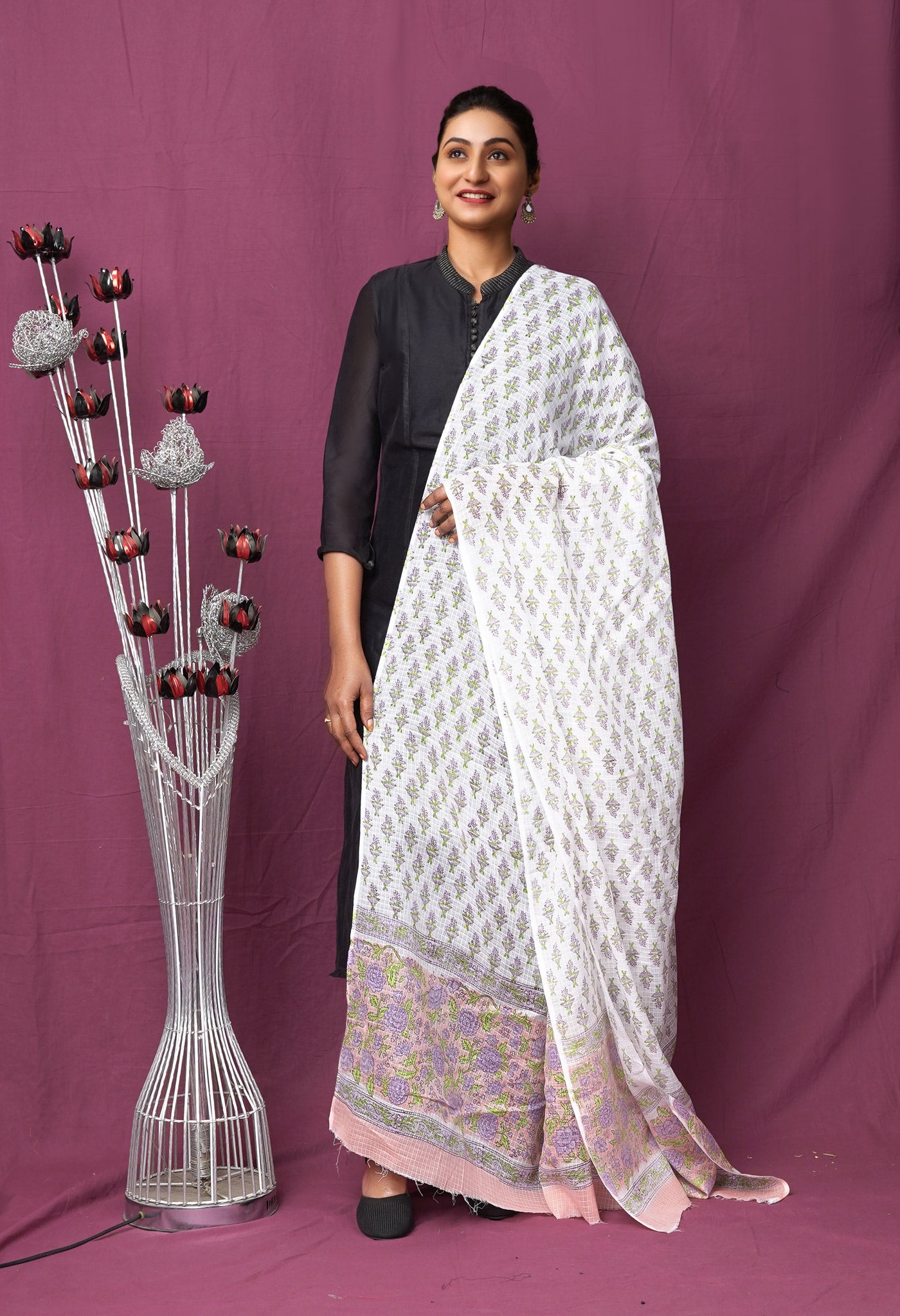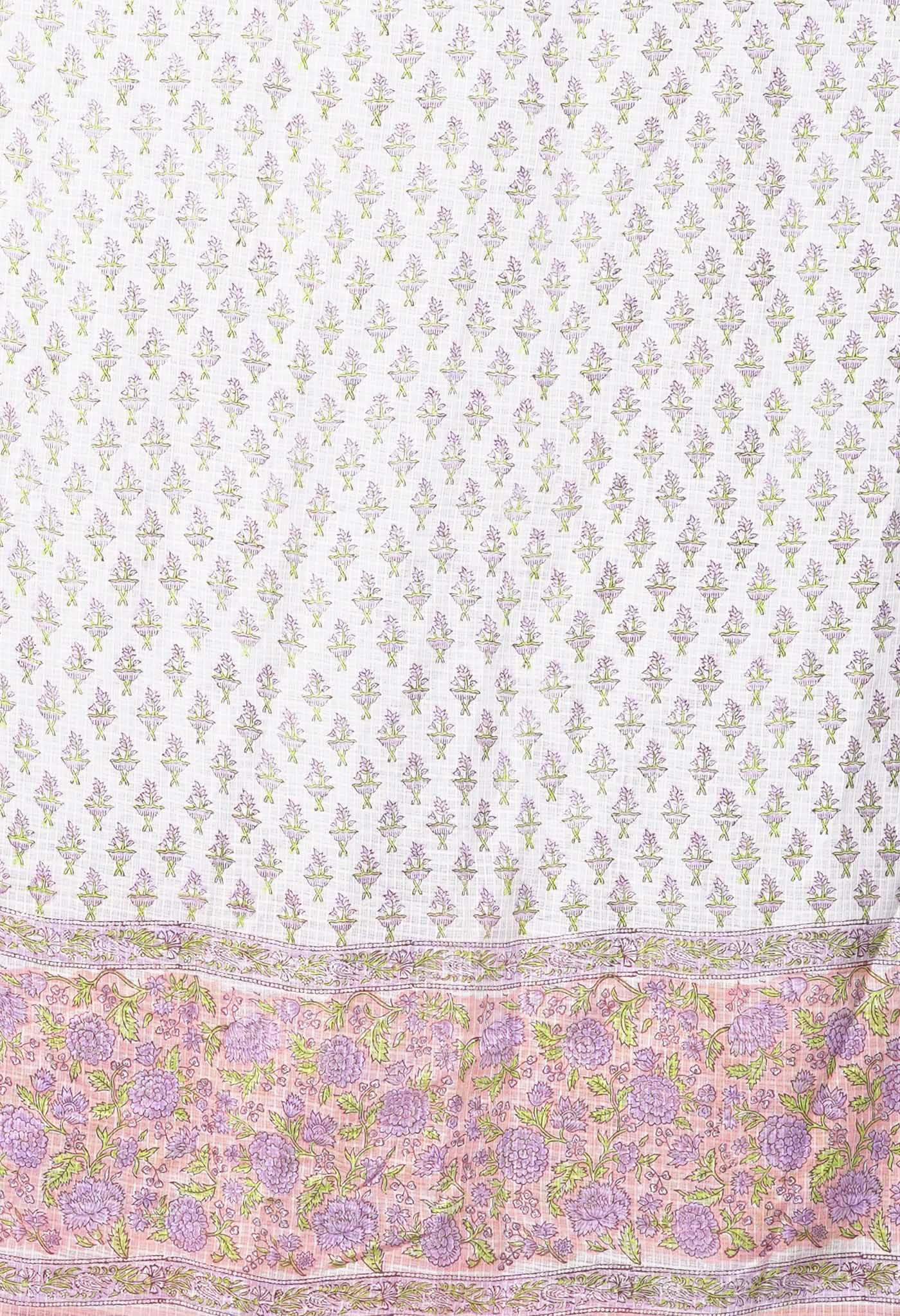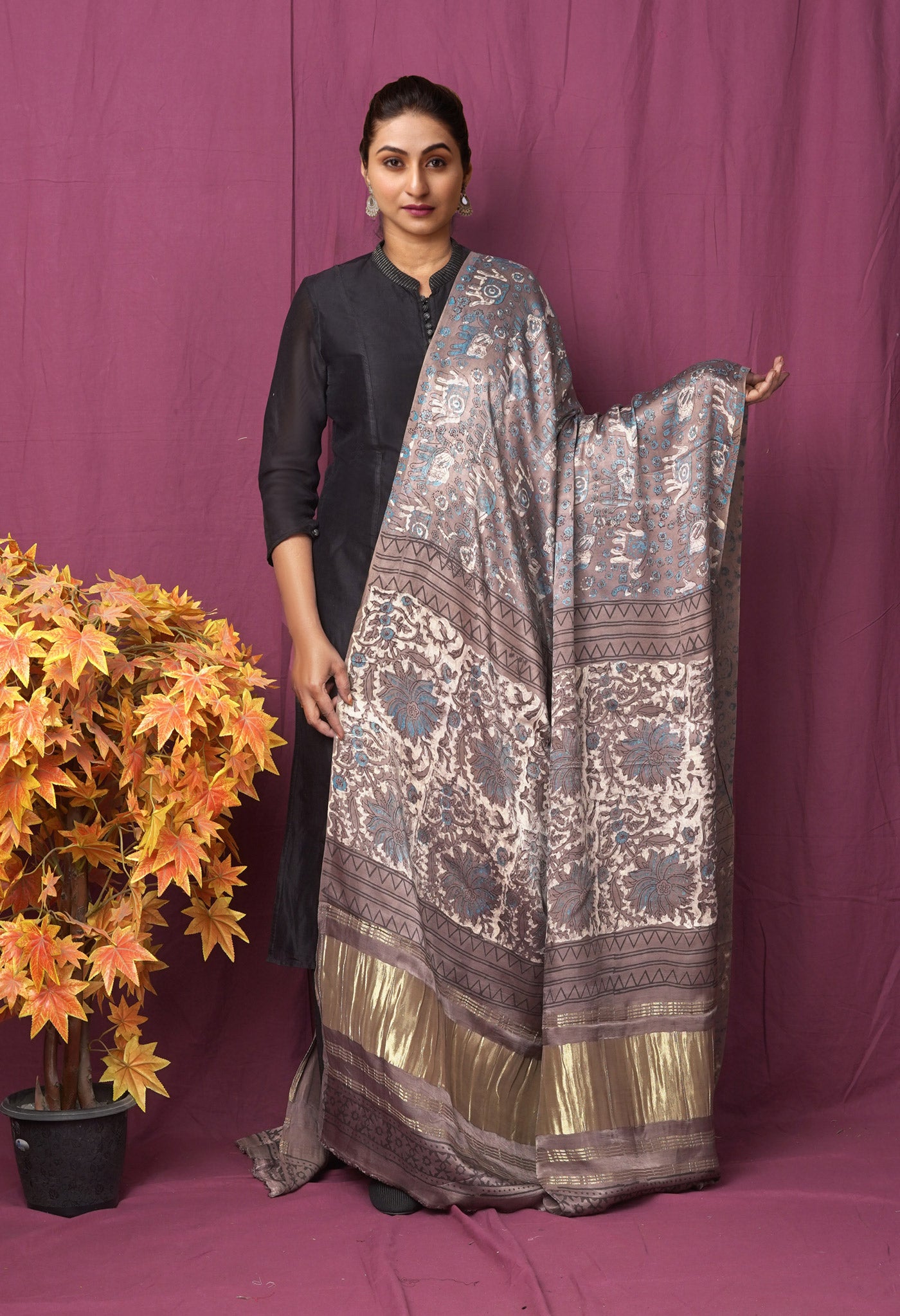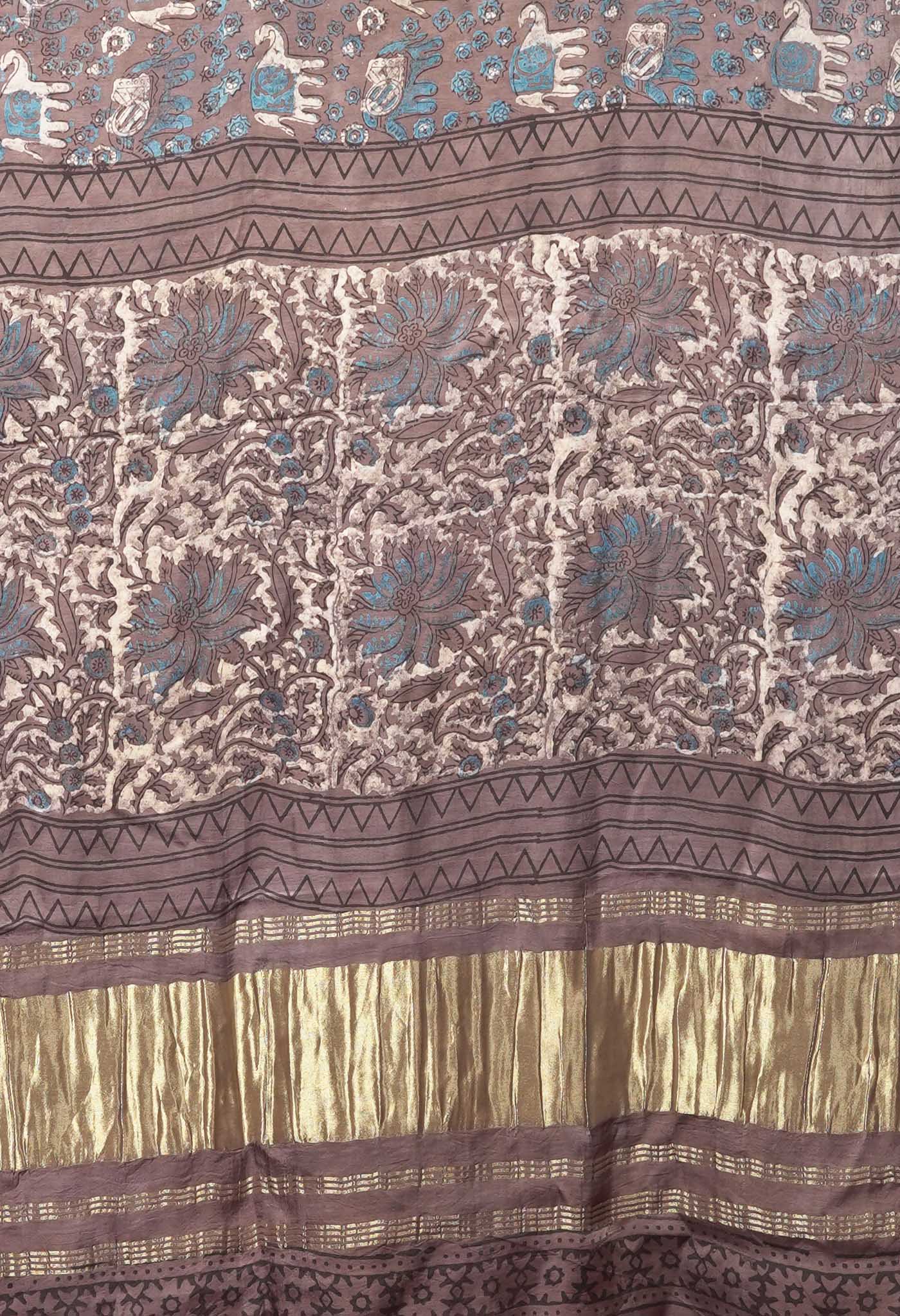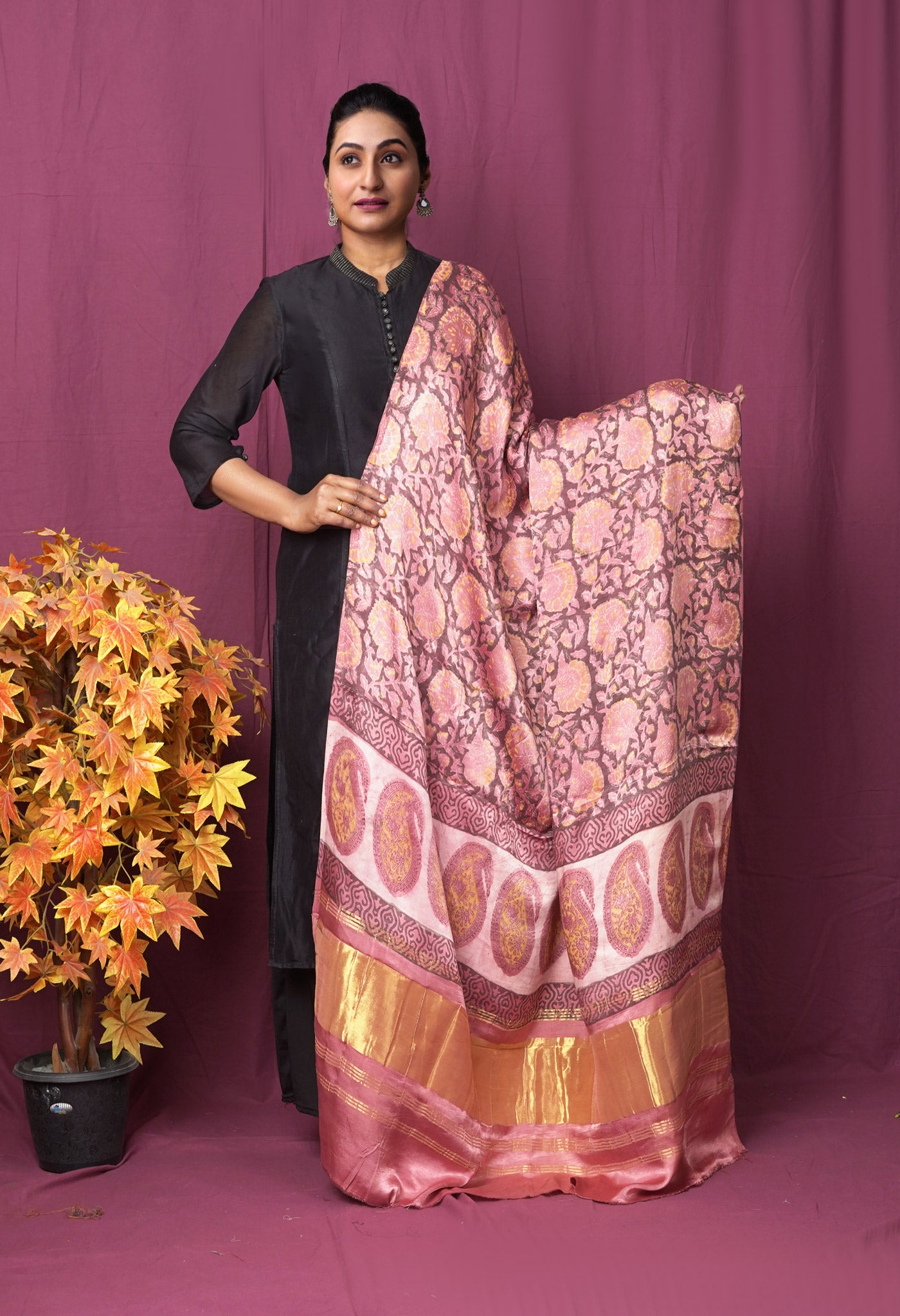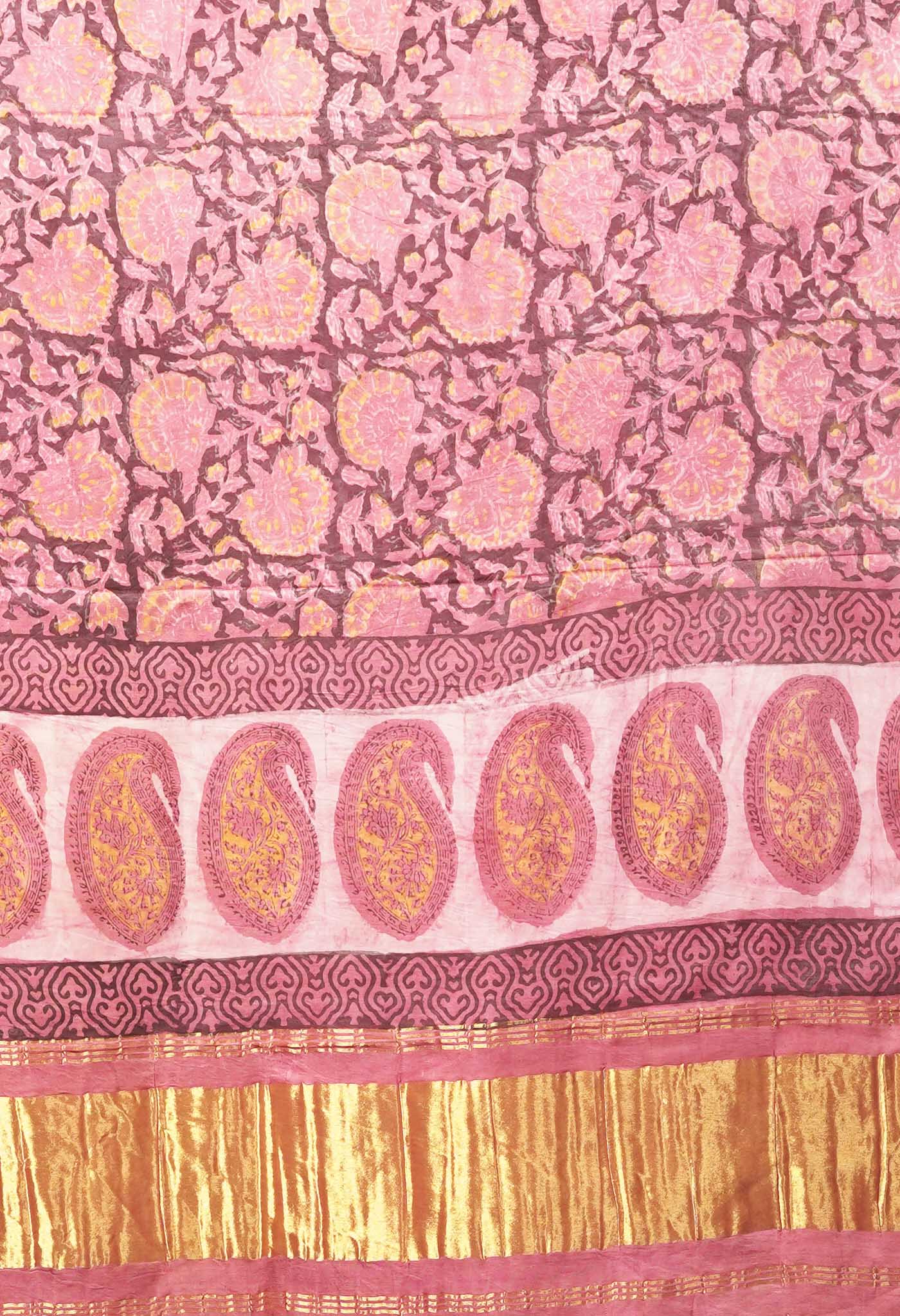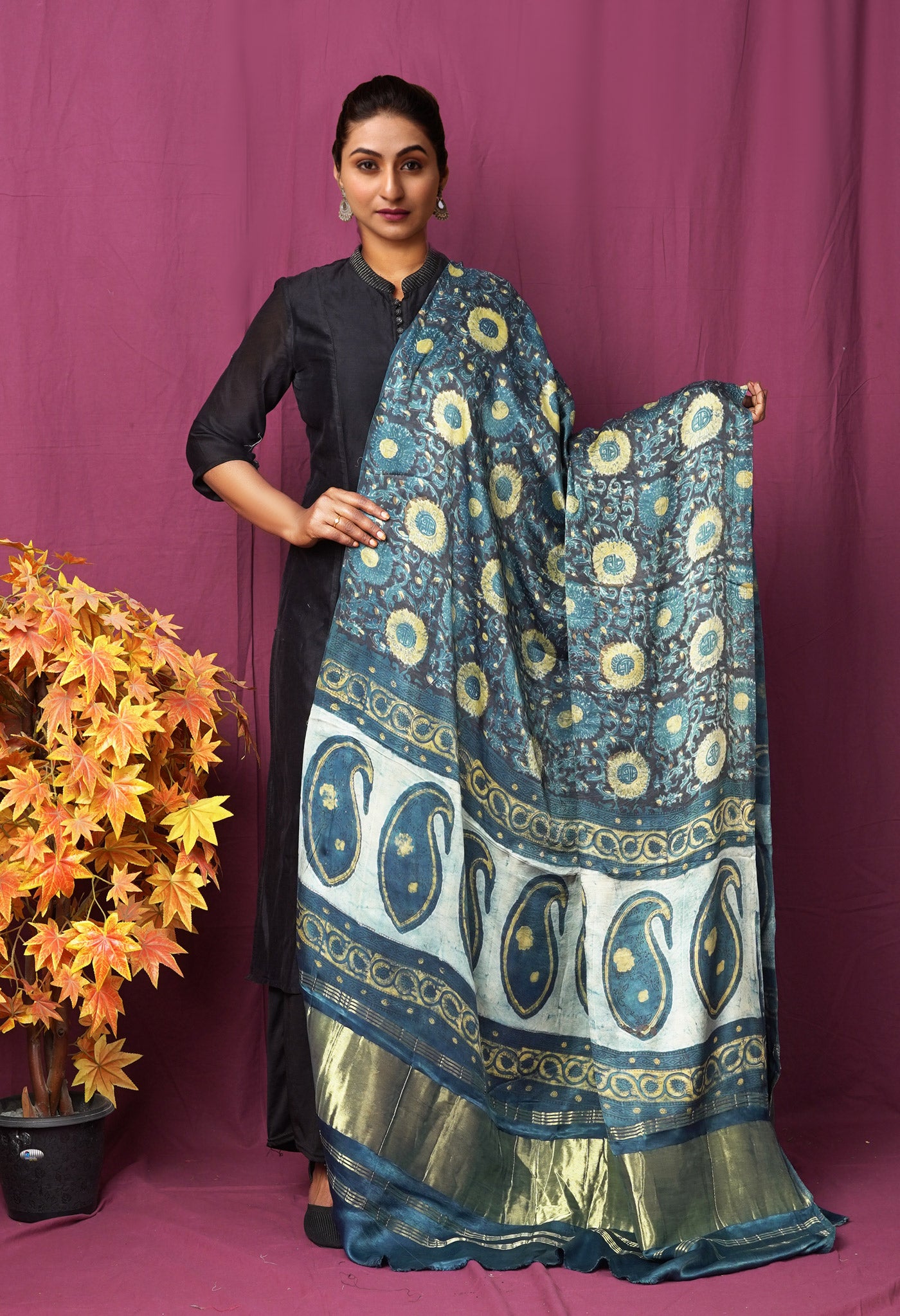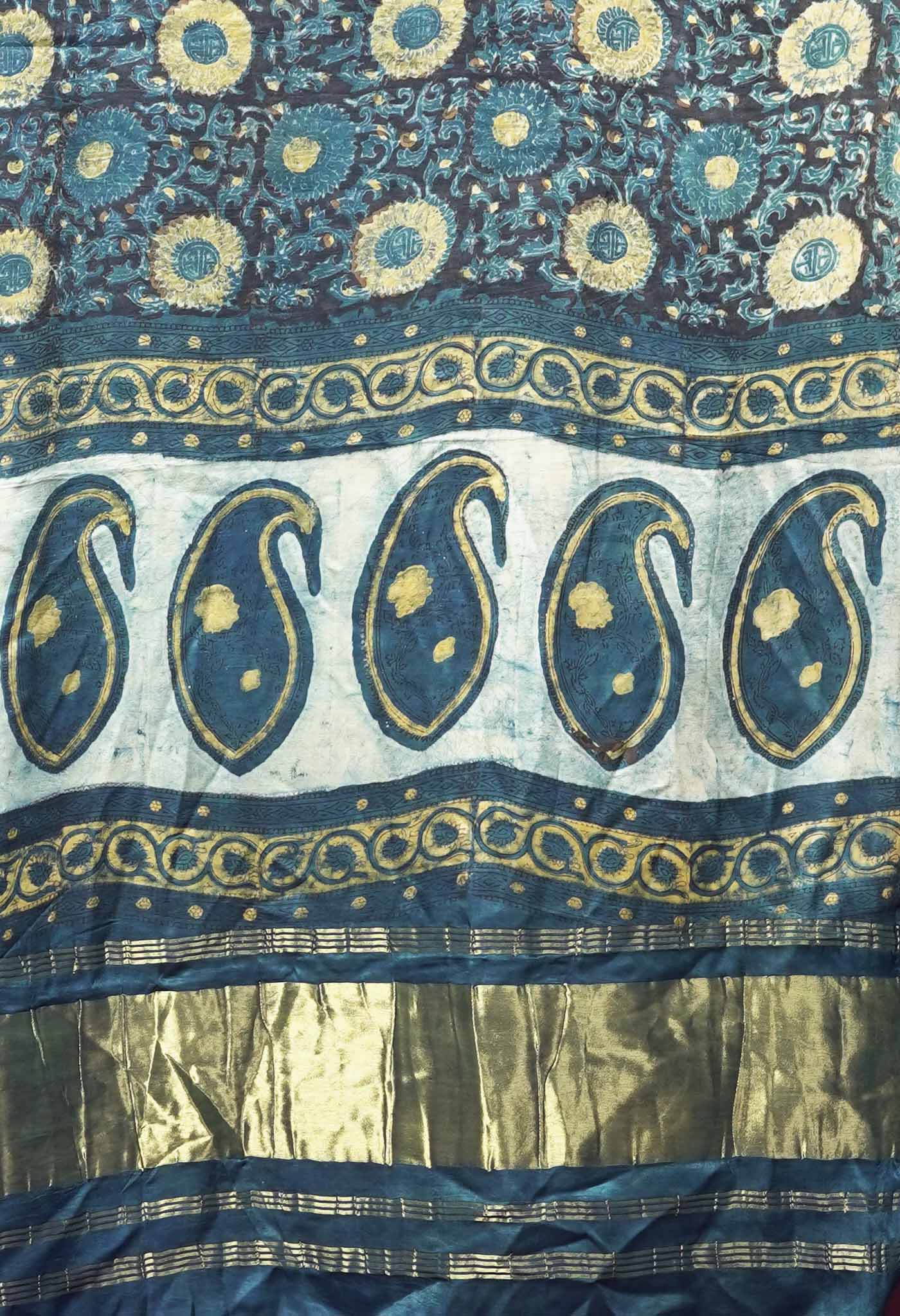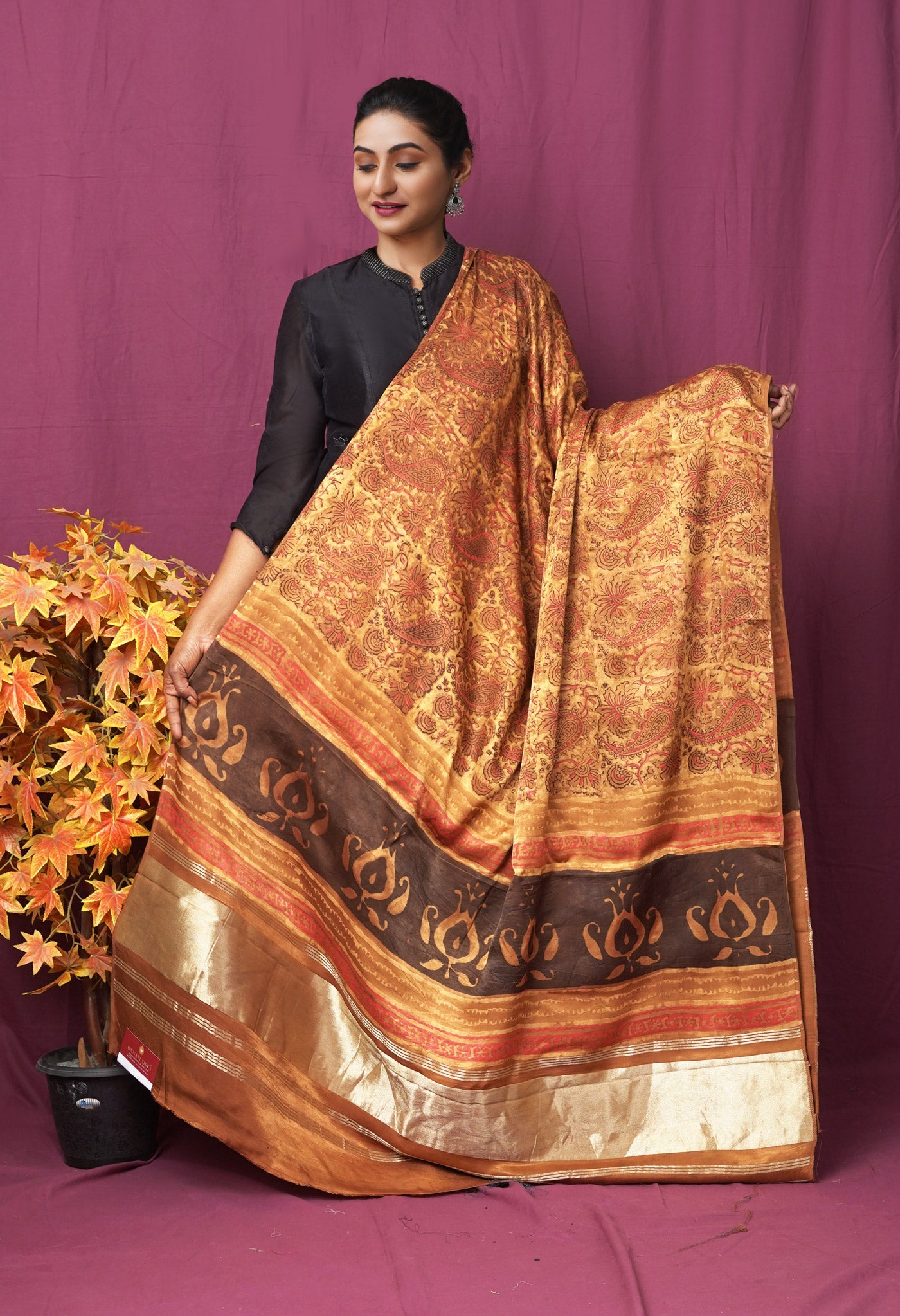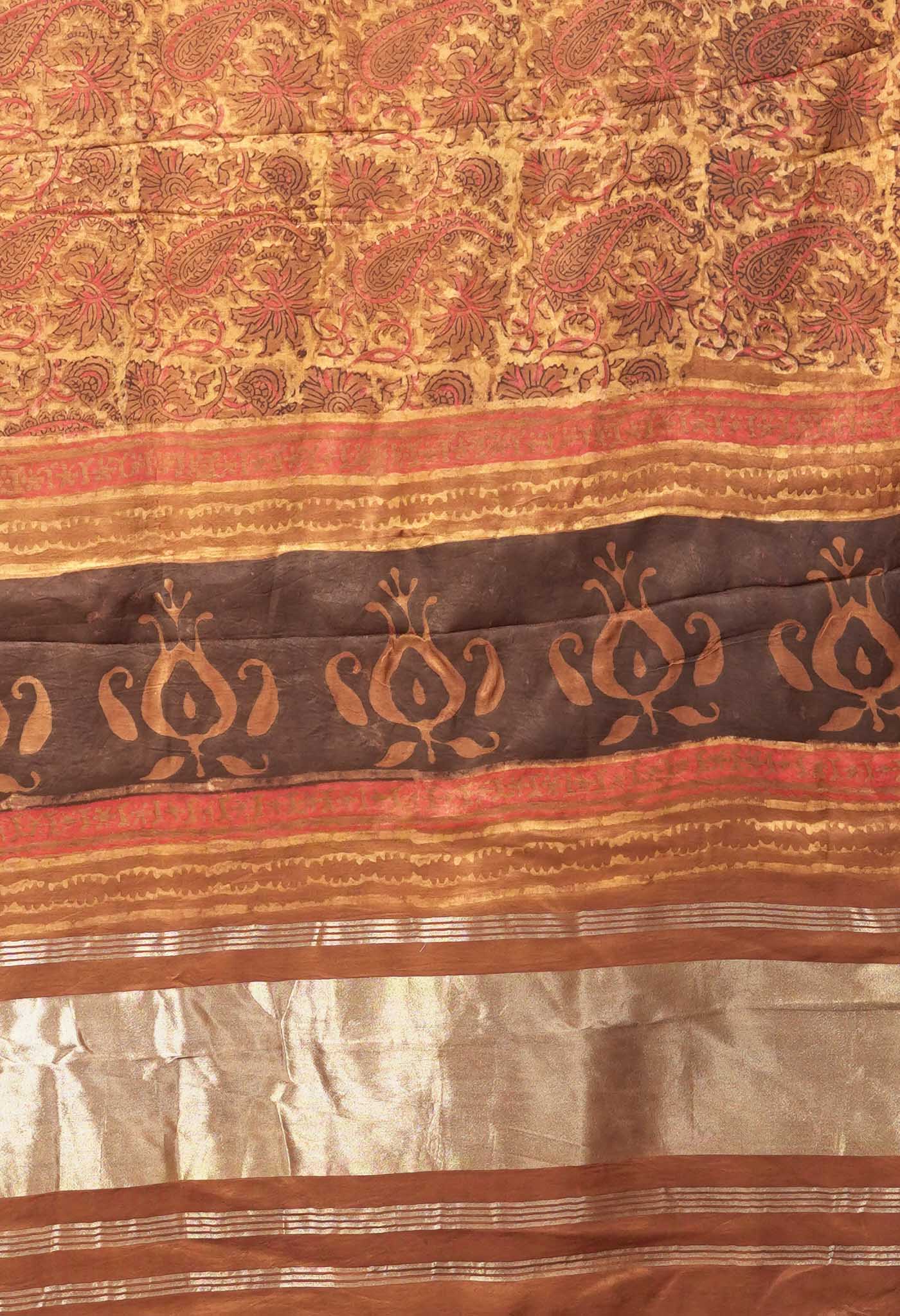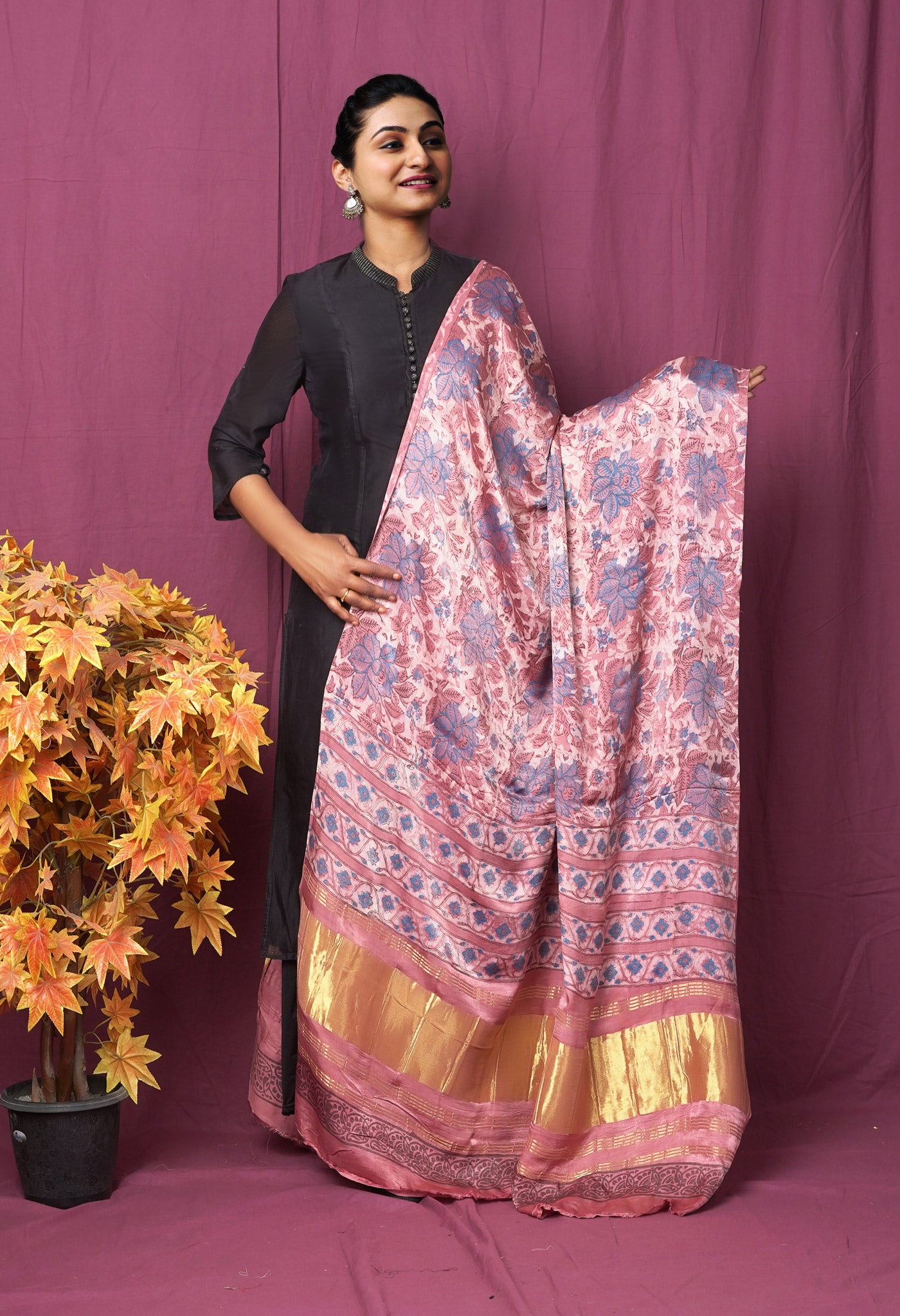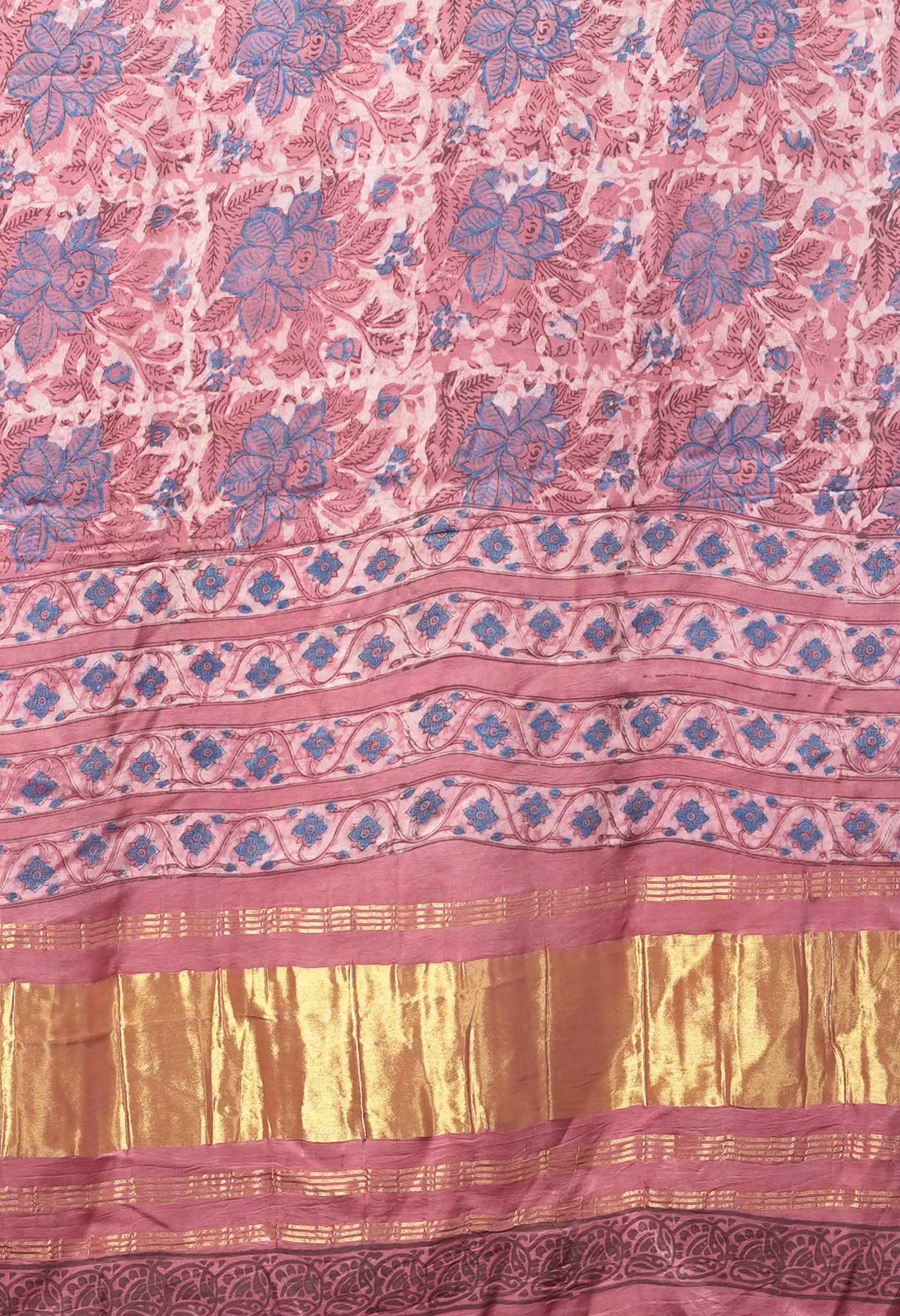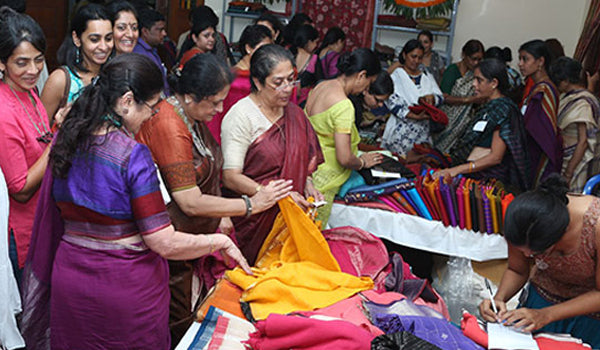
The Bangalore Handloom saree exhibition – an emphasis on Khadi and handlooms
An event that caught the attention of the public for its theme and the manner of presentation, was the Handloom sarees exhibition put up by the Registry of Sarees.
The idea behind the exhibition
Put up as a tribute to the art of handloom in April 2019, by the Registry of Sarees and textile curator Mayank Mansingh Kaul, it showcased the design and variety that is available in handlooms with a special emphasis on Khadi sarees. Titled “Meanings, Metaphor- Handspun and Handwoven in the 21st century”, the exhibition in Domlur, Bangalore had on display 52 sarees from a collection of 108 designs that were a part of a 2003 exhibition titled “Khadi – the Fabric of Freedom”.
This time around, however, Kaul said, they wanted to refrain from using the term khadi. “There’s a lot of difference in Gandhi’s idea of khadi and the khadi we see today. It’s now become a govt. institution. It has become a high-end luxury fabric and the art and history behind it seems to have faded into the background.”

The manner of exhibition
The exhibition that ran from March 31 to April 6 featured sarees presented on sculptural wooden frames in the gallery’s spacious interiors. At the show, the sarees were made to fall from the walls or across curved frames to give a sense of movement of the fabric when worn.
Further on different floors the saree hues were segregated according to the room setting. The ground floor had the indigo part of the collection that contrasted well with the room’s red brick and grey concrete. On the first floor were the yellow and red colored fabrics. In the gallery above were the natural whites.
It also featured workshops and talks, including Lekha Poddar on collecting textiles as part of the larger practice of collecting contemporary art.
An important highlight was the 108-swatch catalogue of khadi sourced from across the country that visitors could flip through. Designed to be touched and held up to the light to admire its luminosity and the remarkable range in texture and thickness, it was hoped to inspire visitors to order fabrics from the villages where they were made. Five sets of these were placed in a tiny room on the first floor, alongside a fine video interview with Mapu shot by Prasad Bidapa and a photo series by Manuel Bauer on hand spinning in Ponduru in Andhra Pradesh, an important production centre for these sarees.

A visit to other venues as well
Prior to this exhibition they had travelled to Chirala, a small town in Andhra Pradesh, famous for its handloom industry producing ikat weaves. It was primarily for the weaving community. They set it up in a government school where more than 80 weavers came together to study the fabric and techniques. It was more like a workshop, Kaul says. “The weavers told us that the way we displayed the fabrics, it made them feel like artists, not labourers.”
Then there was a visit to iconic Coimbatore’s Lakshmi Mills. “There, too, we got a good response, but, interestingly, a lot of people who visited were upset that none of the fabric was available to purchase,” Kaul says.

The purpose for such exhibitions
Kaul said that, “Efforts like these, are meant to facilitate the study of design and quality of textiles, to reflect on their relevance today and for the future. Ask about region-specific weaves and the efforts for their revival, Ally Matthan, the co-founder of the Registry of Sarees, says reducing textiles to regions is detrimental, an opinion echoed by Kaul.
And why not, when the world of textiles is so fluid, like for example Kanchipuram designs are being done on Benaras sarees, the Kota Doriya sarees from Rajasthan has a GI tag from Mysuru, Chanderi sarees, a traditional weave from Madhya Pradesh, is being used on Benarasi sarees.
“Why do you want to regionalise the art? We often get caught up with the personal sentiment when it comes to sarees handed down from generations. But rarely do we think about the product, the effort and skill put into it,” says Mathhan, whose #100saree pact a few years ago created quite a wave on social media. A resource and study centre in Domlur has been set up for this purpose. Apart from curatorial departments, the centre also provides the environmental conditions necessary for the long-term preservation of these fragile works of art and a research facility for the public. A library, too, is in the works. “It’s all about democratisation of the handloom and building awareness. There is a lot of misinformation about textiles out there. This needs to change,” Matthan says.

For Kaul, the exhibition raises questions on the relevance of handspun, handwoven cloth. After Matthan acquired the collection, Kaul curated its showing last November in weaving village Chirala in Andhra Pradesh, at a conference attended by 500 delegates and 5,000 weavers. It showed next this January at Coimbatore, a major hub of textile spinning and weaving mills where they received 800 visitors daily. “The idea of the exhibition is to say: at a time when we don’t know how to differentiate between handloom and power loom, can hand spinning be that differentiating factor?” asks Kaul. “Gandhi’s khadi was about taking cotton from the grass root level: taking it from your courtyard, spinning it and giving it to a weaver. Today, it’s a Rs2,000-5,000-per-metre fabric, it has nothing to do with Gandhi’s khadi. So, this exhibition is a question: can we just take its material quality—which is unique in the world—as a product of immense luxury, and work with that? We have evidence that handspun, handwoven cotton in India was exchanged with the Roman empire for gold—all the togas were handspun, handwoven muslin from India. Gandhi’s story with khadi is important but it’s part of a much larger story of hand spinning in India.”
About the Registry of Sarees
The Registry of Sarees is a Research and Study Centre with a multi-disciplinary approach that enables design, curatorial and publishing projects in the area of handspun and hand woven textiles. The members seek to express their passion for India – her people, her history, her contemporary culture, her lifestyles and her crafts through these alternative paths:
- A studio space and library that caters to the study and documentation of textiles, their design and creation.
- Curated exhibitions that change the way people understand and experience heritage textiles in the modern context.
- Learning events that educate through the weaver crafts person’s particular skill or trade.
- Textile collections that offer unique interpretations of different traditionally practiced genres of textile skills.

The Registry of Sarees is ably guided by several textile experts who are happy to share their experiences of working at the grass root level with weaving communities across India. Through their growing community of academicians, curators and textile afficionados they endeavor to preserve the ancient art of story-telling through their sarees that is crucial to embracing the future, secure in the fact that the skills and textile heritage are firmly rooted in centuries of innovation and development. Known for their refined aesthetic sensibility and penchant for innovations in textile creations these professionals bring to The Registry of Sarees a curated selection of one-of-a-kind sarees that connoisseurs crave for, in their collections.
The Yali, an ancient mythological creature often represented in stone sculptures in Indian temples – it is part lion, part horse and part elephant, represents their passion for sarees. Considered to be the most powerful of all creatures it is emblematic of the truth that knowledge unites us through mastery.
[/vc_column_text][vc_btn title="Shop Online Authentic Indian Handloom Sarees" color="warning" align="center" link="url:https%3A%2F%2Fwww.unnatisilks.com%2Fsarees-online.html||target:%20_blank"][/vc_column][/vc_row]

